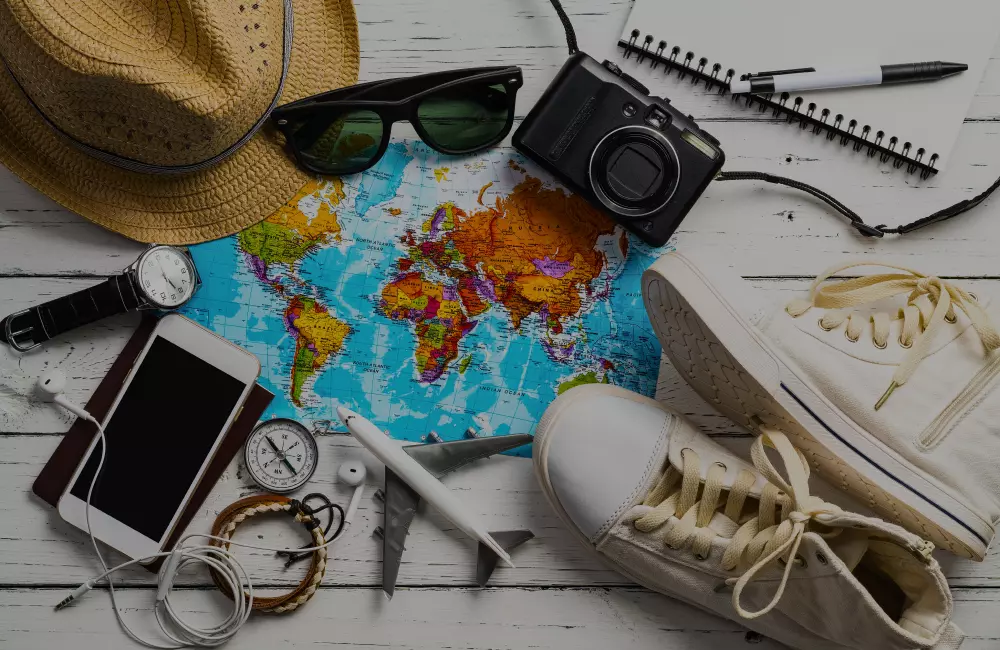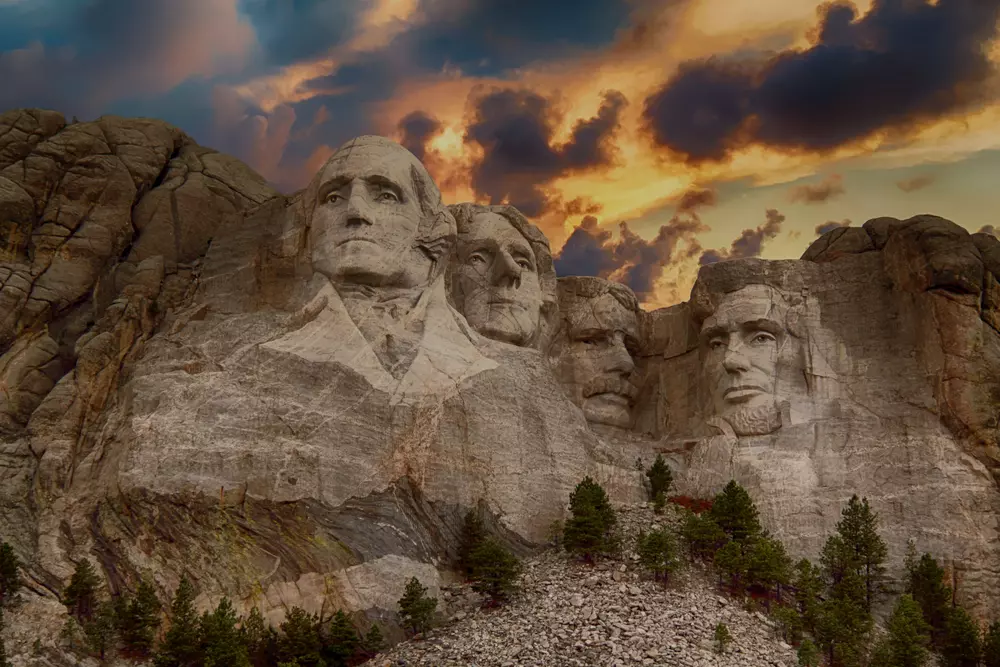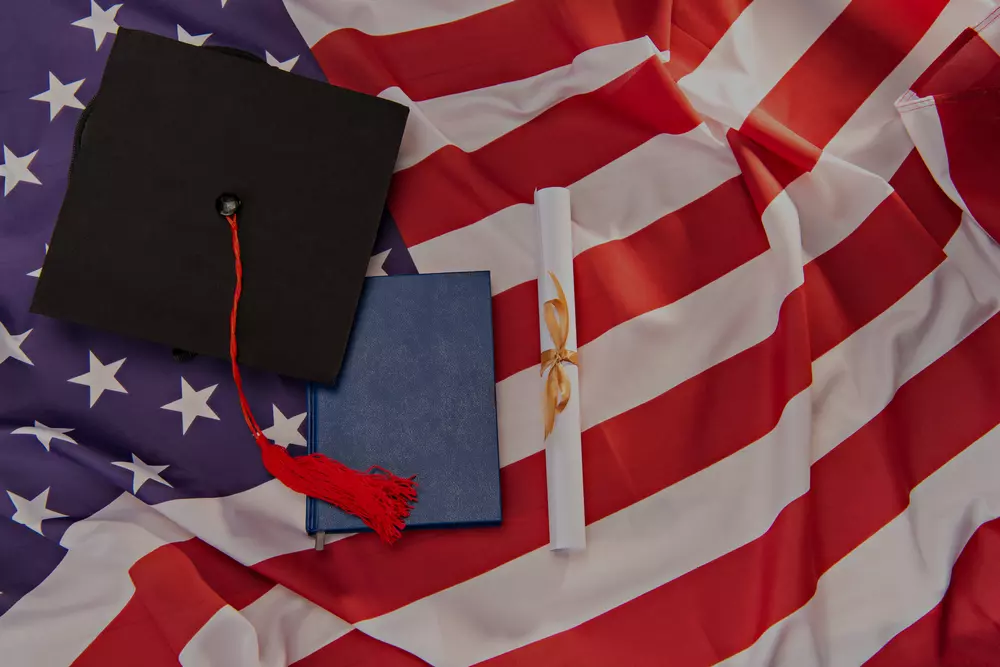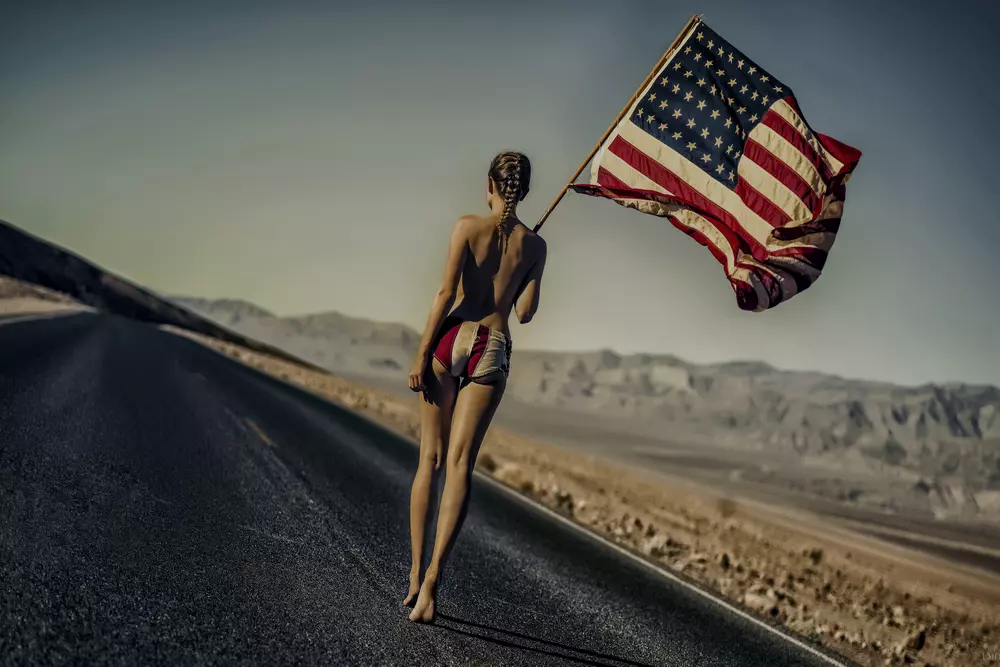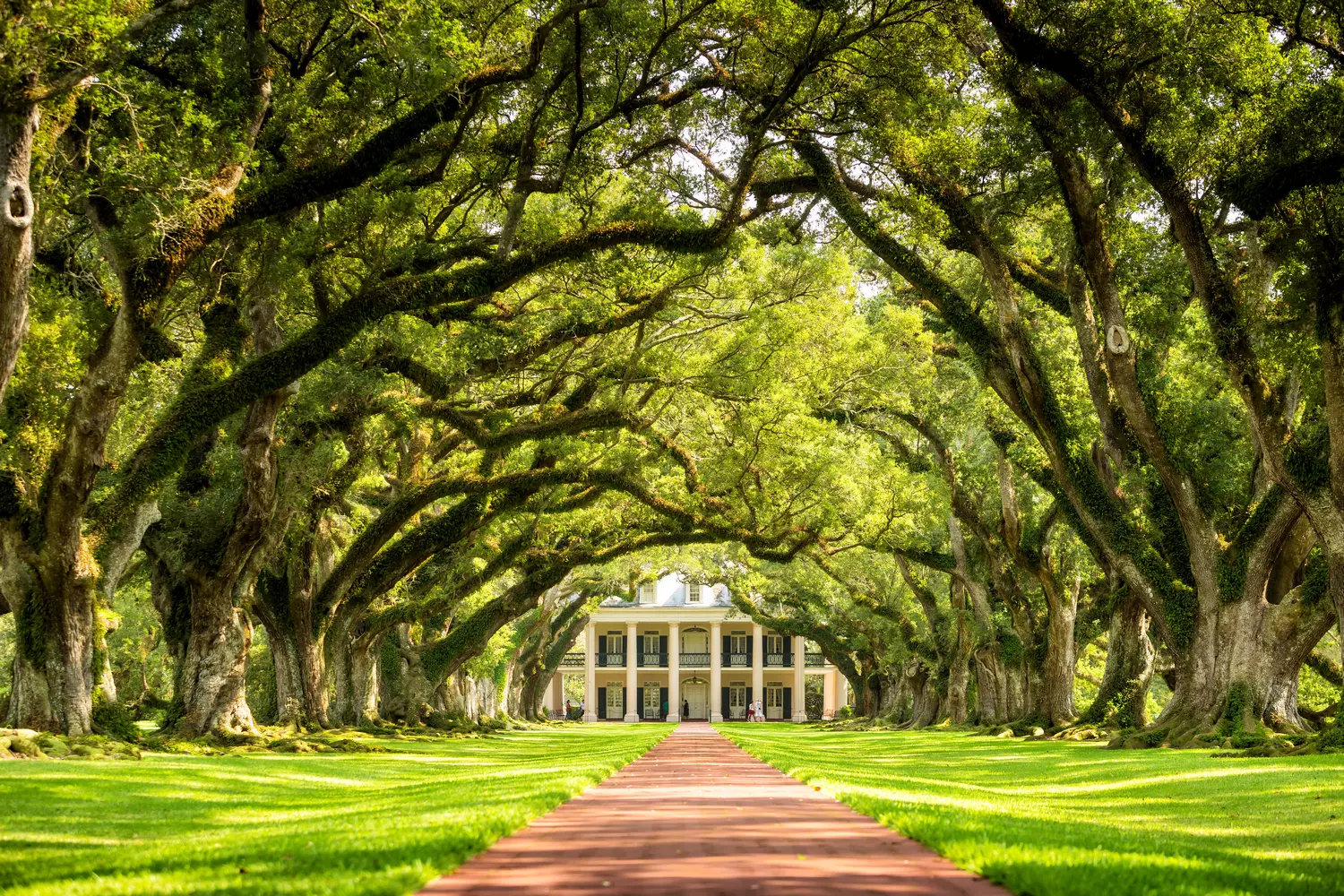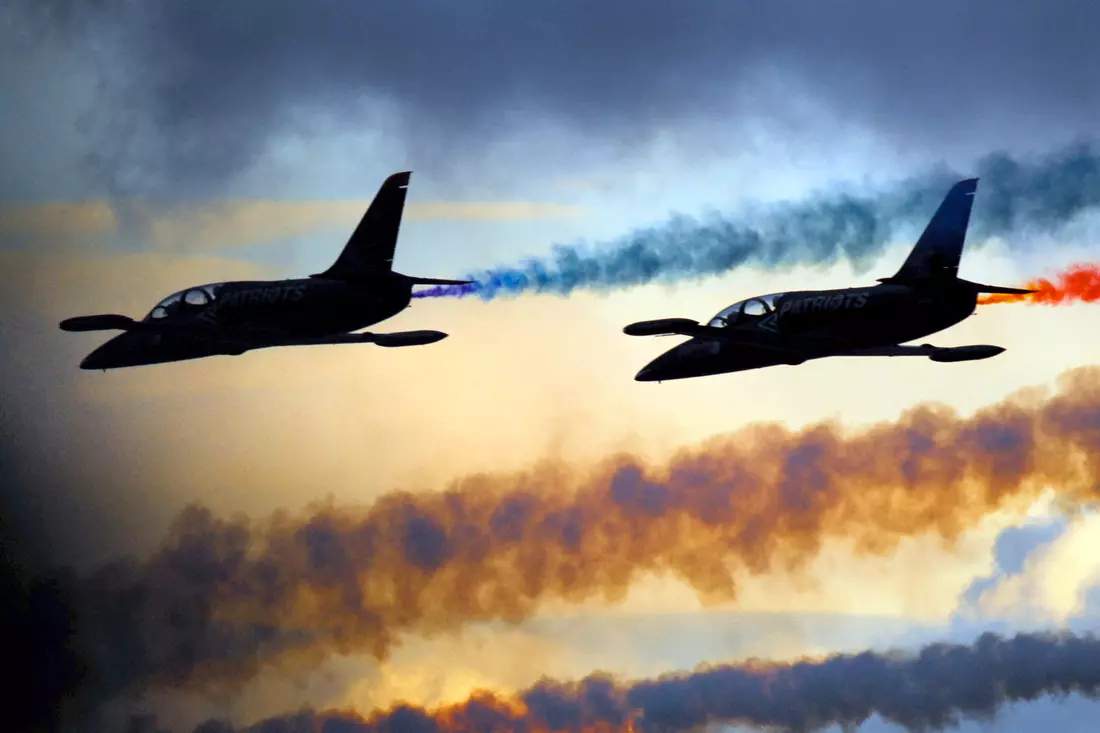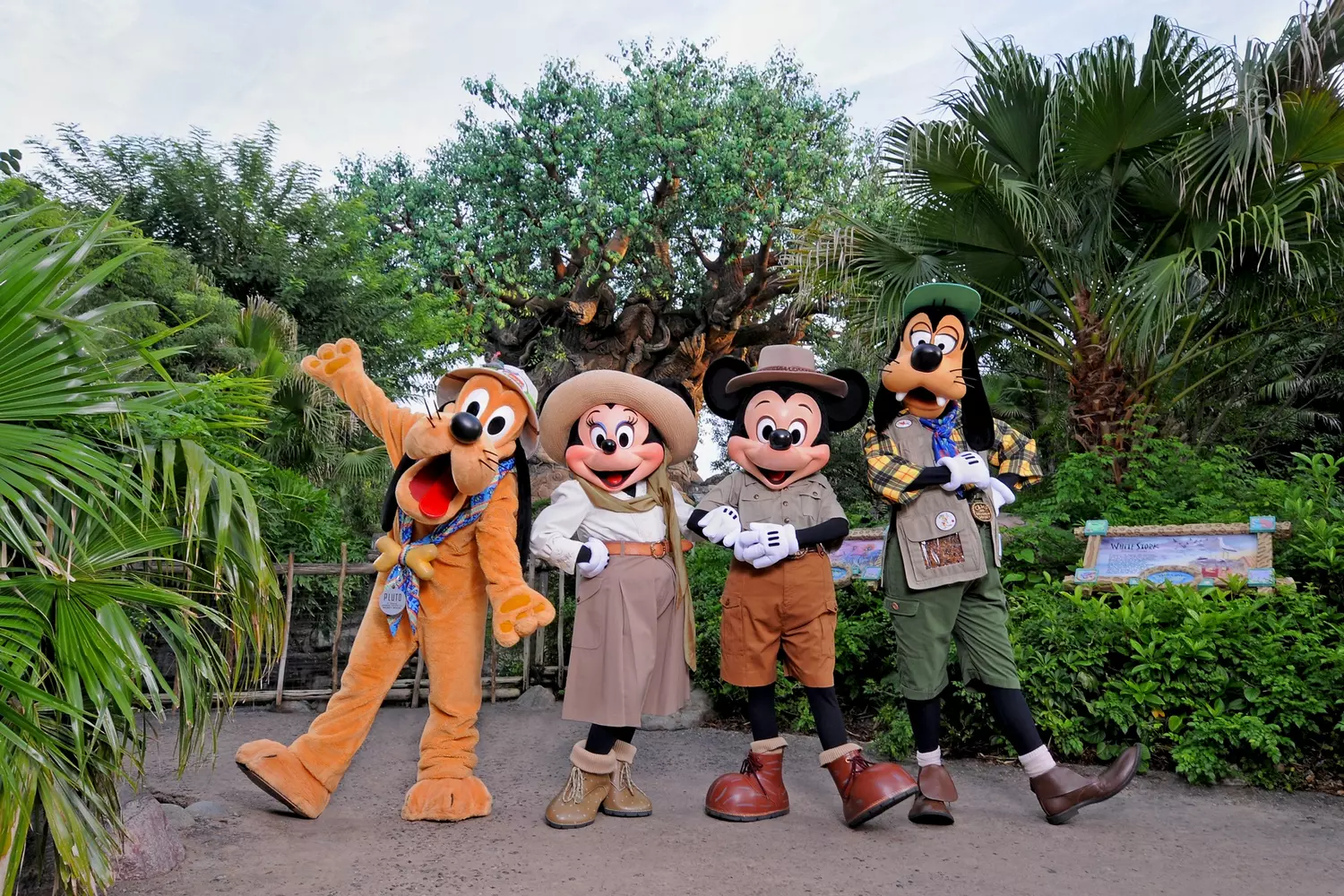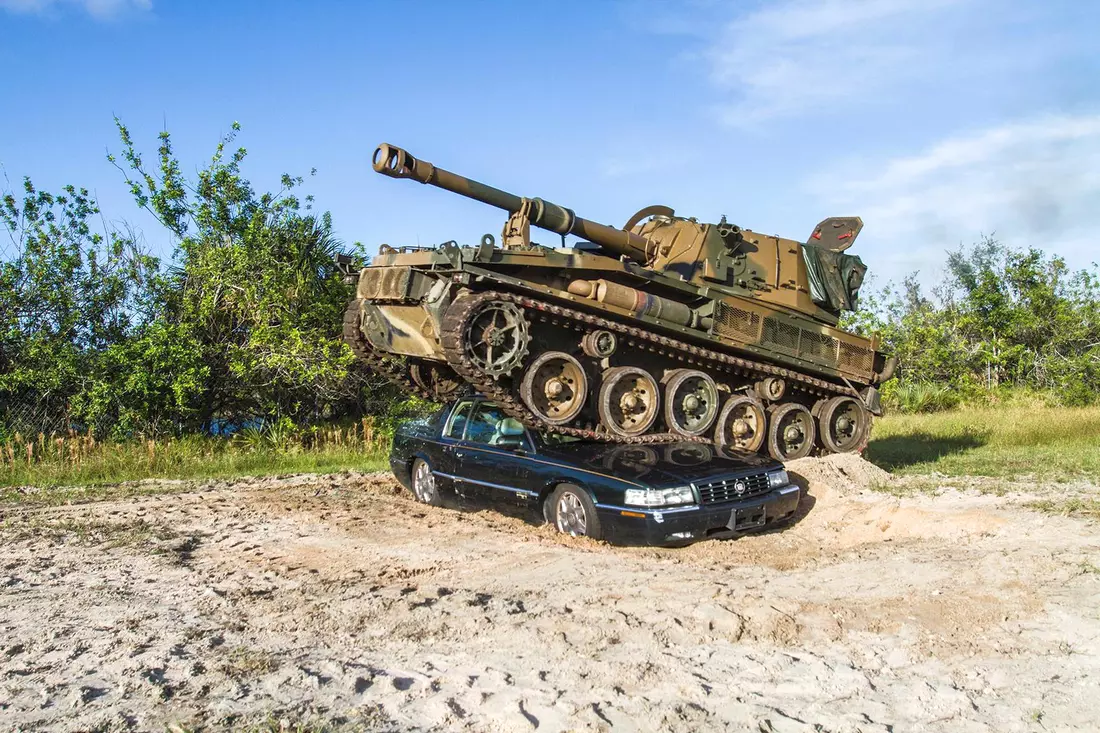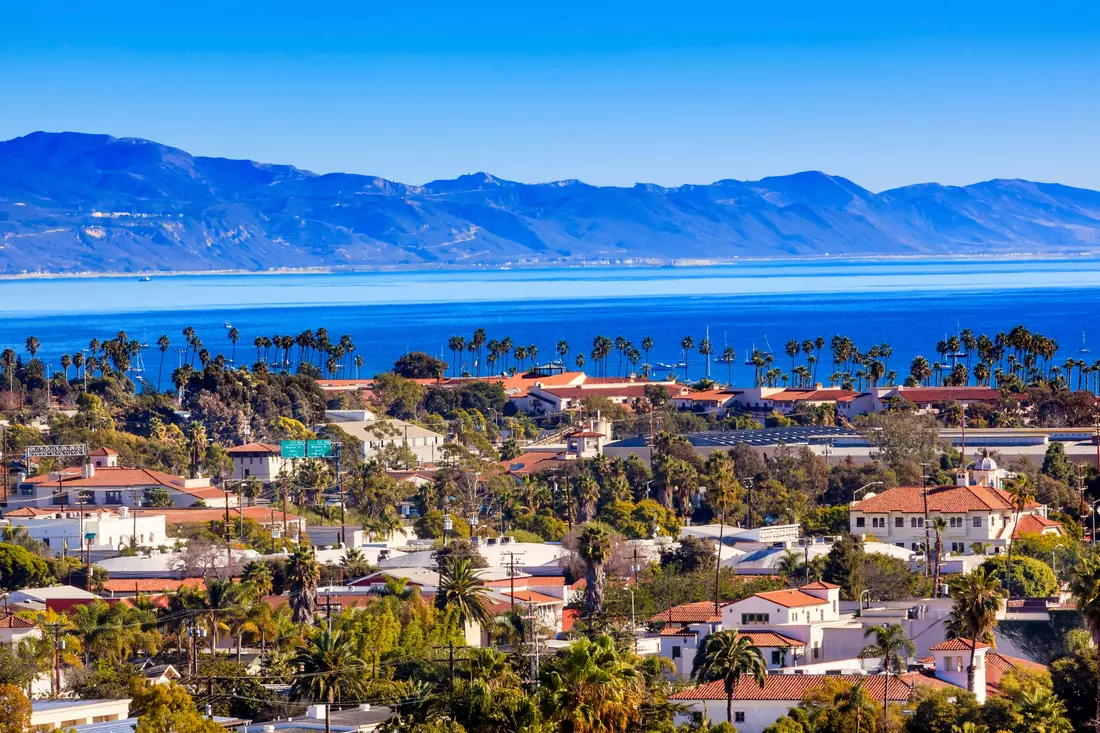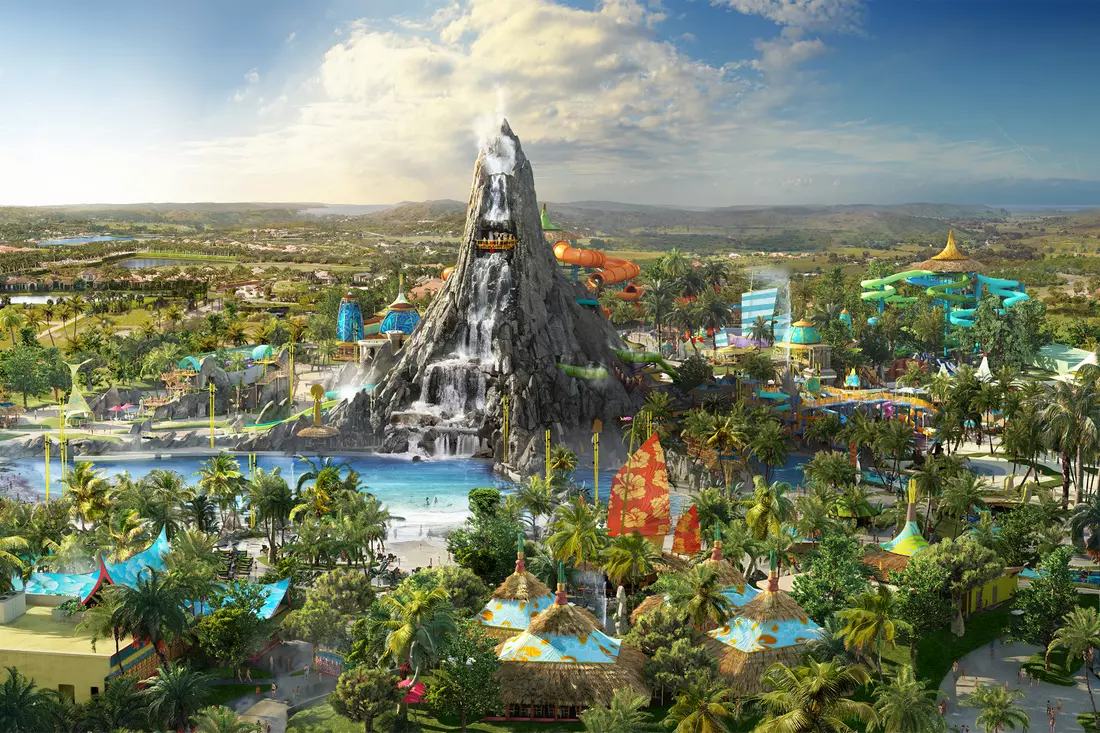Alaska is more than just geography. The word sounds like the wind through spruce forests, the crack of ice beneath your feet, the distant rumble of thunder among the mountains. Hear it? A chill and a spark of curiosity already set in. Alaska is not just a spot on the map — it’s a frontier where civilization ends and nature begins.
What comes to mind when you hear “Alaska”? Bears? Snow-capped peaks? Permafrost and the Northern Lights? Yes, all of that, but there’s something even more important — a feeling. The feeling that you’ve arrived somewhere where you can still experience being an explorer. Where roads aren’t always paved, but the impressions are 100% real.
Here, man ceases to be the ruler. Nature decides. It can be gentle, but more often it’s harsh. And that’s where the true beauty lies: you don’t conquer Alaska, you look it in the eye and respect it. This is a land where a sunrise can cost you a 12-hour journey over rough terrain. Where whales appear only if you know how to wait. Where a bear is not a cartoon beast, but a rightful neighbor.
Alaska is an incredible blend of eras. Here live the descendants of the Aleuts and Tlingits, here stand wooden churches built by the Russians, American pilots lead tours over glaciers, and old-timers cherish memories of the day the first internet arrived in the village. Everyone has their own Alaska. For some, it’s a peaceful cruise through the Inside Passage; for others, it’s hunting in the tundra. Some spend a short summer in a fishing village, others have a romance with the Northern Lights.
In this article, we won’t just list attractions. We’ll go deeper. We’ll tell you why this place is worth visiting more than once, how people live here, what scares and inspires travelers. Where to find your own Alaska and how to make the journey a true adventure — in the spirit of Jack London, but with 21st-century comfort.
Buckle up. What follows is pure adventure.
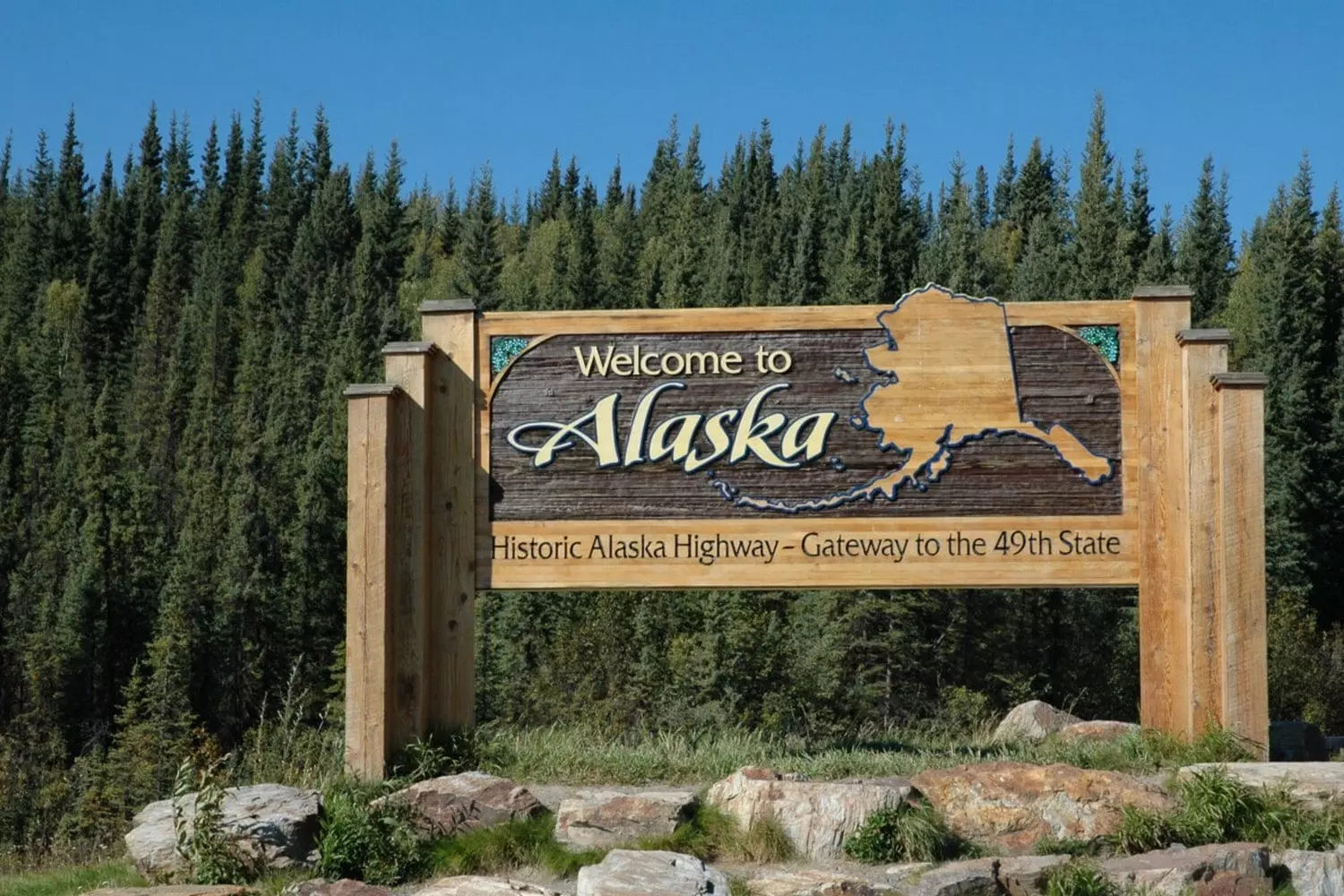
Alaska is so vast that it could fit Germany, France, Italy, the United Kingdom, and Japan all at once — with room left over for California. It’s not just a state. It’s half a continent.
How Alaska Transformed from a Russian Colony into America’s Oil Heart
The word “Alaska” is neither American nor Russian in origin. It comes from the Aleut word Alaxsxaq, which translates as “the mainland toward which the sea points.” For a seafaring people living on islands, this word was more than just a geographic marker — it was a direction of life, a path to the land where food could be gathered, goods traded, or shelter sought from storms. This perspective — looking from the sea toward the mainland — became the first designation of a land that centuries later would become a stage for geopolitical struggles.
- 01. “A senseless purchase” — that changed the USA
In the spring of 1867, a seemingly strange deal was signed between the Russian Empire and the United States. For $7.2 million — roughly 2 cents per acre — America acquired a huge tract of land covered with ice, mountains, and forests. Many in Congress mocked it at the time: “We bought a refrigerator with bears and moss.”
This skepticism soon turned to regret. Russia, facing financial difficulties and fearing British encroachment from Canada, preferred to sell Alaska. For the USA, it was a geopolitical win. Russia got rid of an unprofitable territory, and the USA gained a strategic point at the gateway to the Arctic and access to the Pacific Ocean. - 02. The fever that changed Alaska forever
Everything changed in 1896, when a gold-rich site was discovered in Canada’s Yukon, near the Alaskan border. The Klondike Gold Rush began. Within months, thousands of men (and many women) rushed north.
The journey was no easy feat. Through the Chilkat and White Pass mountain passes, carrying sacks of flour, shovels, picks, and food for six months. Some died from starvation, others from avalanches. But those who endured held onto the hope of striking it rich.
Alaska transformed from a deserted colony into a bustling hive. New towns sprang up — Skagway, Nome, Dyea. Ships came one after another, and even newspapers in New York wrote: “A new America is being forged in the North today.”
Although Alaska itself was not always a source of gold, it became the gateway to the Klondike’s riches. Camps, infrastructure, and ports formed here — all of which later became the economic backbone of the future state. - 03. The path to recognition: from wild frontier to full statehood
Despite the gold rush and development, Alaska remained on the fringe of American attention for a long time. Only in 1912 was it officially designated a territory, but even then it lacked full political power — no senators, and limited voting rights in Congress.
Alaska became the full 49th state of the USA only on January 3, 1959. This followed decades of struggle by residents for recognition. One of the main reasons was the understanding that in the era of the Cold War, Alaska was not just a remote outpost, but a military-strategic point on the world map. - 04. World War II: the unexpected battle for the Aleutians
Few know, but in 1942 the Japanese army landed on the Aleutian Islands, occupying Attu and Kiska. This was the first time an enemy set foot on current U.S. soil since the British in 1812.
Suddenly, Alaska found itself on the front lines. Military bases, airfields, and roads were built. Lend-Lease aid passed through Alaskan airfields to the USSR. This was when America realized the strategic importance of these icy lands. - 05. The oil revolution: black gold beneath the ice
In 1968, the largest oil deposit in the USA was discovered near Prudhoe Bay. This was a true sensation. Construction began on the Trans-Alaska Pipeline — 1,280 km from the bay to the southern port of Valdez. The pipeline’s completion in 1977 changed the state’s entire economic landscape.
Alaska ceased to be a subsidy-dependent region. Oil provided a huge budget and enabled the creation of a permanent dividend fund, from which Alaskans still receive annual payments.
Fun fact: every resident of Alaska (including babies) receives dividends from oil revenues. In 2022, this amounted to $3,284 per person.
Alaska has traveled a path from a colony sold with irony to a strategic and energy center without which the USA would not be what it is today. This is a story not just about land — it’s a story about the intersection of empires, the perseverance of people, and how wild nature shapes the character of an entire region.
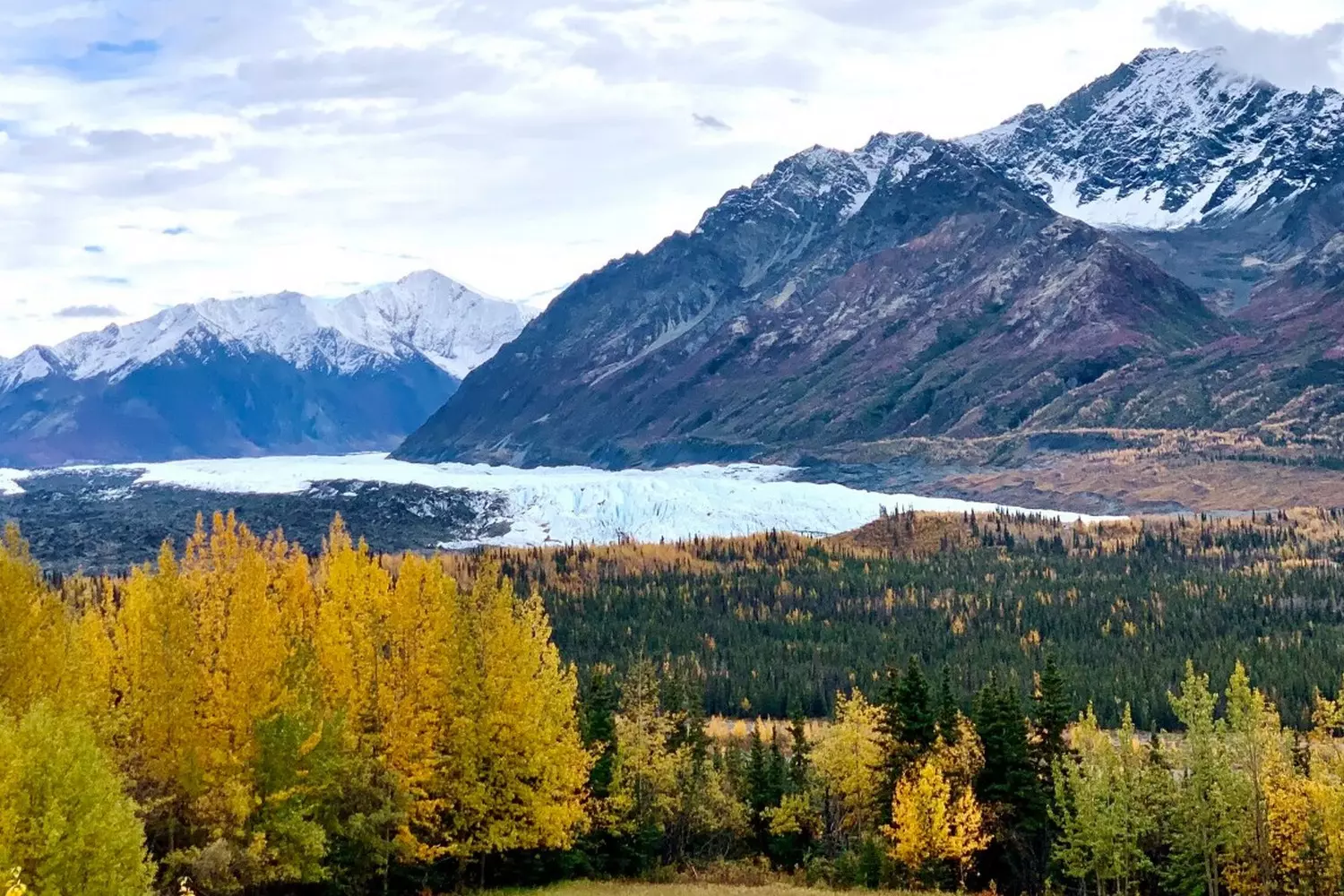
Geography of Alaska: Where the Land is Bigger Than the People
Imagine a land where silence stretches for hundreds of kilometers, where you can drive all day without encountering a single city, and beyond the horizon, there is still no end in sight. This is Alaska — the largest and most sparsely populated state in the USA, where scale always surpasses imagination.
Alaska is more than you think, and even more than you can imagine.
- Total area — 1.7 million square kilometers. That's larger than the combined area of Germany, France, Italy, the United Kingdom, and Japan.
- If you overlay a map of Alaska onto the USA, it would stretch from the East Coast all the way to California.
- If Alaska were a separate country, it would rank among the top 20 largest countries in the world.
- 01. Where is Alaska located?
This question sounds simple — but Alaska’s geographical position is truly unique.
- In the northwest of North America, between Canada and the Arctic.
- To the north, it is bordered by the Arctic Ocean; to the south — by the Pacific Ocean.
- To the west, Alaska is separated from Russia by the Bering Strait, only 86 km wide.
- South of it lie the Aleutian Islands, stretching in an arc almost to Kamchatka.
Alaska is a kind of geographic bridge between East and West. It’s no coincidence that during the Cold War, the US built military bases here closest to the USSR.
- 02. Relief: a symphony of mountains, plains, and water
The landscapes of Alaska amaze with their diversity. There is no single "typical" landscape here — each region seems to live its own geographical life.
- Mountains and glaciers
The central part is occupied by the Alaska Range, which includes Denali Mountain (6190 m) — the highest point in North America. Around it lie hundreds of glaciers covering millions of hectares. - The North is tundra
Here you find permafrost, moss, dwarf shrubs, and endless plains. This is the realm of reindeer and polar bears. - The South is taiga and fjords
Dense forests covered with spruce transition into rocky shores where glaciers end directly in the ocean. - The West is wetlands, rivers, and lowlands
Here lie vast wetlands and the largest delta in North America — the delta of the Yukon and Kuskokwim rivers. - Aleutian Islands
This is a volcanic arc of more than 300 islands, where nature seems prehistoric, and volcanoes still breathe.
- 03. The water that shapes everything
Alaska literally drowns in water — not only because its climate is wet. It is a state of rivers, lakes, seas, and glaciers.
- More than 12,000 rivers, including giants like the Yukon (the second longest in the USA) and the Kuskokwim.
- More than 3 million lakes, many of which remain unnamed.
- Coastline length — over 54,000 km including all bays, islands, and inlets. This is longer than all other US states combined!
- Glaciers — more than 100,000, of which about 600 are active and constantly moving.
Some glaciers, like Mendenhall, retreat by tens of meters every year. Scientists consider Alaska one of the best "climate monitors" on the planet.
- 04. Climate: from subarctic to maritime coolness
Alaska’s climate is not only about frosts and blizzards. It is much more diverse than it seems at first glance, changing from region to region like different worlds on one map.
- Northern Alaska lies in the Arctic zone. Here reigns the polar night in winter and the polar day in summer. Temperatures drop to –50 °C, and life is subject to harsh natural conditions.
- The central part of the state features a continental climate: summers can be hot — up to +30 °C, and winters bring real cold, often below –30 °C. Sharp temperature swings and snowy plains make this region a true challenge for those who decide to venture here.
- The southern coast is almost the opposite. The climate here is maritime, mild, and humid. Frequent rains, fogs, and summers with comfortable +15…+20 °C. Thanks to the ocean, winters here are milder than in the rest of Alaska.
- The Aleutian Islands have wet and windy weather year-round. Storms, drizzle, constant wind shifts — all this makes the region similar to the northern Scottish islands, but with volcanoes.
For comparison: in Anchorage, the largest city in Alaska, winter temperatures usually stay around –10 °C, and summers are pleasant at +17…+18 °C. Meanwhile, in Fairbanks, closer to the state center, winters can truly surprise — with frosts down to –40 °C and magnificent northern lights.
- 05. Seismic activity and volcanoes
Alaska is one of the most seismically active regions in the USA. Up to 40,000 earthquakes are recorded here every year, no joke. This happens because Alaska lies at the junction of the Pacific and North American plates.
- In 1964, the second strongest earthquake in recorded history occurred here — 9.2 magnitude, destroying almost the entire southern region and triggering a tsunami.
- The region has more than 130 volcanoes, of which over 40 are considered potentially active.
- 06. Ecosystems
Alaska contains 8 ecoregions and over 15 different climate zones. Here you find arctic deserts, subarctic forests, coastal rainforests (a cold analogue of the Amazon!), mountain meadows, and icy plateaus.
That’s why Alaska is a true paradise for ecologists, biologists, and anyone tired of city noise.
Interesting fact: Alaska covers 17.5% of the territory of the USA, but less than 1% of the country’s population lives there.
Every part of Alaska is like a separate country. Somewhere you can walk on a glacier as if on glass. Somewhere else — stand by an extinct volcano with a view of the Bering Strait. And somewhere — talk to a hunter whose family has lived here for ten generations.
Thanks to its geography, Alaska remains not just a "state of the USA," but a whole separate planet within the continent. Here you can feel the scale of the Earth and, oddly enough, find your place — even if it’s at the edge of the world.
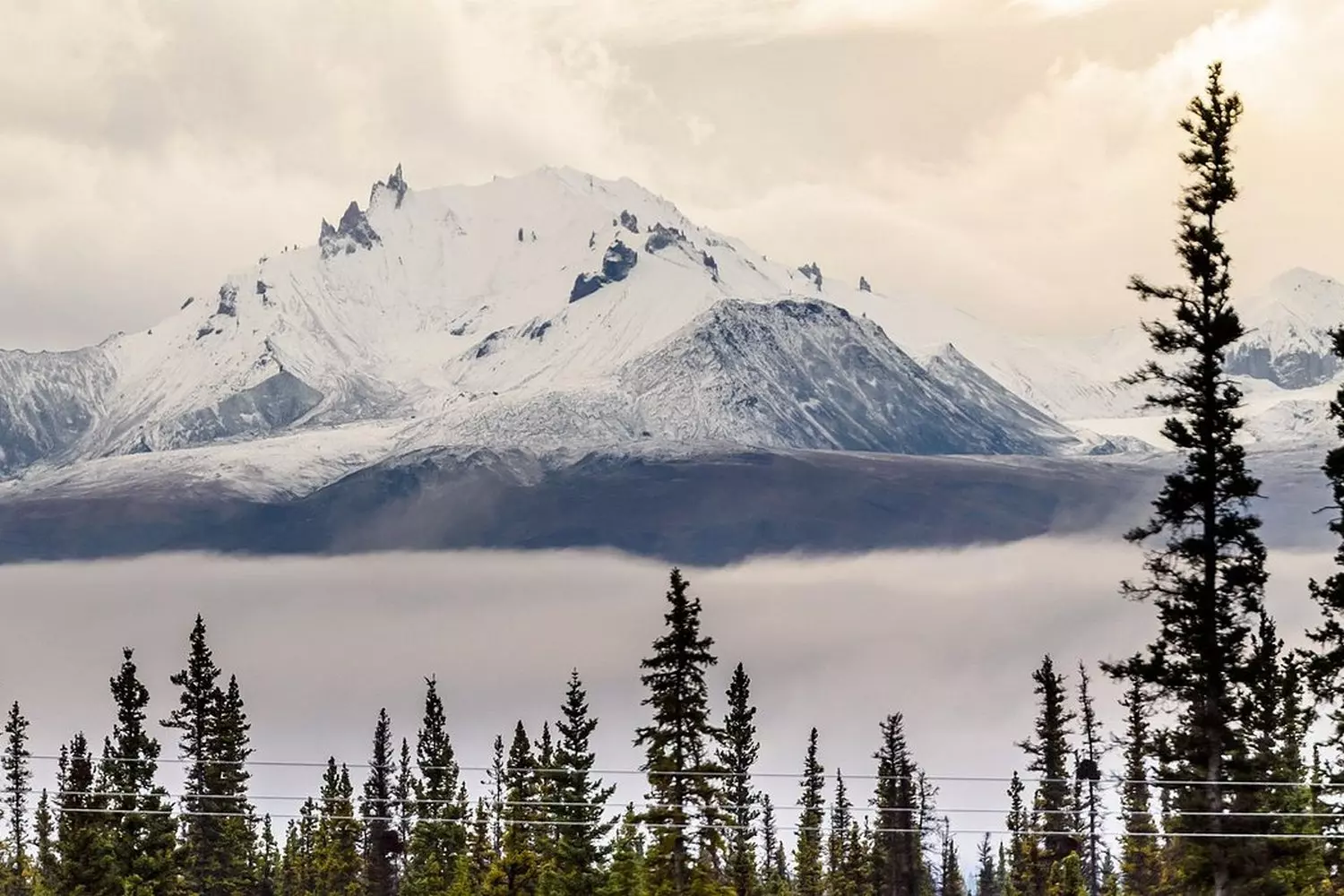
The Living North: Who and What You Can Encounter in Alaska’s Wild Nature
Alaska is a vast natural sanctuary governed by its own rules. Every tree, every animal, every bird here is part of a complex, pristine ecosystem barely touched by humans. Probably nowhere else in the USA will you find such a number of animals roaming freely on their land rather than in a zoo. The same goes for the vegetation: hardy and resilient, it survives where everything else would have long since frozen.
- 01. Bears, moose, and other neighbors
If anyone associates Alaska with an animal, it’s certainly the bear. Here live three species:
- Grizzlies
The most famous. Weighing up to 500 kg, they are especially active in spring and early summer when they catch salmon. - Polar bears
Kings of the Arctic. They can be found along the northern coast, especially near Barrow. They live on ice floes and feed on seals. - Black bears — slightly smaller than grizzlies but more common, found from forests to foothills.
Interesting fact: In Katmai National Park, an annual “Fattest Bear of the Year” contest is held. The winner is the one who has eaten best in preparation for winter hibernation — a competition watched online by millions.
But besides bears, there are also: - Moose
The largest members of the deer family. Shoulder height up to 2 meters, weight up to 700 kg. Often found near water bodies. - Caribou
Reindeer whose migrations are a true spectacle. Some herds travel up to 5,000 km annually! - Wolves
Rare and elusive, but Alaska has preserved wild populations. - Wolverines, lynxes, foxes, beavers, stoats
Classic taiga inhabitants fearless of Alaskan frosts.
- 02. Marine life: whales, walruses, and orcas
The southern and western coasts of Alaska are a paradise for those who love watching marine giants.
- Humpback whales
They migrate here in summer to feed and then move to warmer waters to breed. - Orcas
Fast, intelligent predators. You can spot them near the shores during cruises. - Walruses
Seemingly lazy but graceful swimmers. They gather in huge colonies on ice floes. - Sea lions and seals
Frequent visitors of bays and rocky shores.
On an Inside Passage tour, you can often see an orca, a whale, and a sea lion in one day — depending on luck and weather.
- 03. Birds — the sky residents of the North
Alaska is truly a bird paradise. Over 500 bird species have been recorded here, and every summer millions of birds arrive from around the world. It’s a kind of “international airport” for birds.
- Bald eagles
The symbol of the USA. In Alaska, they are common residents of forests and coasts. - Puffins
Bright seabirds with red beaks. Found on cliffs and islands. - Geese, ducks, cranes, sandpipers
They all nest here in spring and summer. - Owls, tits, crossbills
Representatives of Alaska’s forest fauna, adapted to cold and solitude.
- 04. Plants that don’t give up
Alaska’s climate is harsh on vegetation, which is why the local flora exemplifies incredible resilience. In the southern and central forests grow Sitka spruce and white spruce, balsam poplar, birch, alder, and willow — hardy shrubs along rivers. Moss and lichens literally cover everything: stones, trees, and ground. In the north, in the tundra, dwarf shrubs and cotton grass dominate — the foundation of the local “carpet.” Moss, reindeer lichens — food for caribou and ecosystem base — and Arctic flowers, tiny but surprisingly bright, bloom for just a couple of weeks in summer.
Interesting fact: Despite the harsh climate, Alaska grows its own vegetables in summer thanks to nearly round-the-clock daylight. In some villages, cabbages grow up to 20 kg, and pumpkins reach the size of a car trunk. - 05. National parks — nature’s refuges
To preserve all this wealth, Alaska has established a whole network of protected areas:
- Denali National Park — the most famous, home to bears, moose, and panoramic mountains.
- Kenai Fjords — glaciers, fjords, and marine life.
- Gates of the Arctic — a northern wilderness with no roads leading in.
- Katmai — the best place to see bears fishing.
- Wrangell–St. Elias — the largest national park in the USA, about three times the size of Yellowstone.
These parks are not zoos or theme parks. They are true wilderness where you are a guest. There are no wide trails, no fences, and animals are not fed by humans. This is the real Alaska.
Alaska is not just a place to “see bears.” It’s a land where humans are only temporary visitors, and nature speaks its own language. Those who know how to listen will hear it.
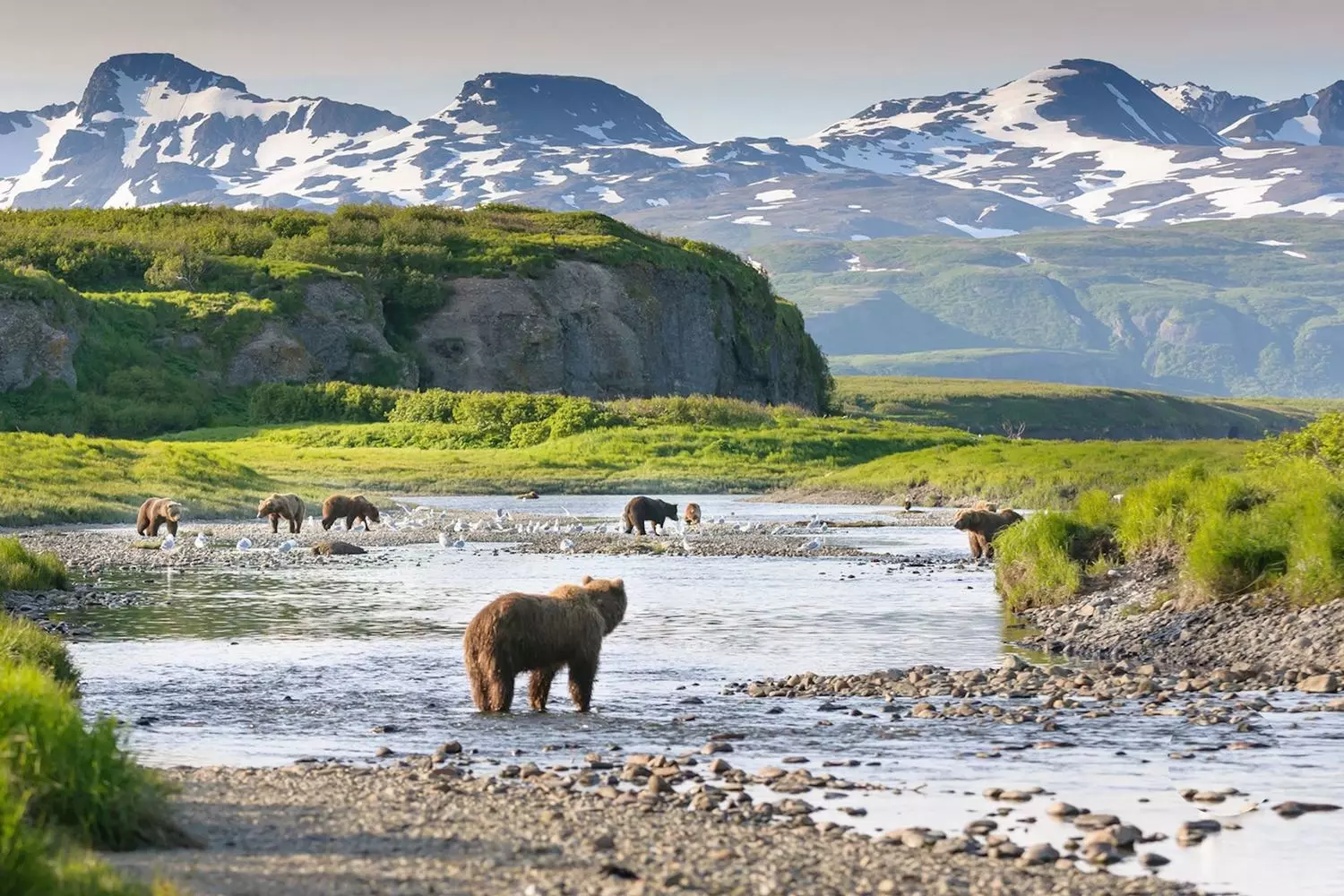
Alaskan Cities: Where Life Beats on the Edge of the World
Alaska is not just about bears and glaciers. Here, amid wild nature, on the banks of icy rivers and in the shadow of snow-covered mountains, real towns exist. Small by global standards, but with big character. Life here pulses with a northern rhythm — where a supermarket might neighbor a husky sled team, and a café conversation is more likely about an approaching storm or salmon migration than the stock market.
- 01. Anchorage — where civilization meets tundra
Population: about 290,000 people
Famous for: the largest city in the state, a transportation and cultural hub
Anchorage isn’t the capital, but it’s effectively the heart of Alaska. It has everything: from universities and museums to an international airport and a major port. And yet, just 15 minutes from downtown, you might spot a bear strolling along a creek. Highlights:
- Anchorage Museum
A modern, interactive space about the history, culture, and climate of the North. - Tony Knowles Coastal Trail
A walking and biking trail along the bay with panoramic views of mountains and volcanoes. - Alaska Native Heritage Center
A cultural center showcasing Indigenous traditions, crafts, performances, and reconstructed villages.
Anchorage stands out because it’s easy to forget you’re on the edge of the world. Everything functions — there’s Wi-Fi, cafés, traffic, and even a pub with live music. But step outside the city, and you’re instantly in wild silence.
- 02. Juneau — a capital with no roads
Population: about 31,000 people
Famous for: Alaska's capital, inaccessible by road
Yes, Juneau is the only U.S. state capital you can’t reach by car. Only by plane or ferry. That makes the city a bit isolated but uniquely authentic. Juneau’s highlights:
- The Mendenhall Glacier towers just outside town — one of the world’s most accessible natural wonders.
- Home to the Alaska State Capitol, designed in colonial style.
- Bald eagles frequently perch on lampposts here, much like pigeons in other cities.
Life is unhurried, and locals have a saying: “We live in the wilderness — we just built a few buildings inside it.”
- 03. Fairbanks — the city of northern lights
Population: about 32,000 people
Famous for: a northern "gateway to the Arctic," top spot for seeing the aurora
Fairbanks is Alaska’s second-largest city — and the coldest. In winter, temperatures can hit –40°C, but that doesn’t stop people from going to work, school, or the market. In summer, it's all midnight sun, warm evenings, fishing, and biking. What makes Fairbanks special:
- Aurora Borealis
Its geographic location offers the most consistent and vivid northern lights in the U.S. - Museum of the North
Alaska’s largest scientific collection — from archaeology to Arctic art and design. - Chena Hot Springs
Thermal springs an hour away, where you can soak even in –30°C.
Fairbanks is for those who embrace the cold and love a true winter experience.
- 04. Sitka — a slice of Russia on the Pacific
Population: about 8,000 people
Famous for: the former capital of Russian America
Sitka is a city with a Russian soul. Once the center of the Russian colony, it still preserves:
- St. Michael’s Cathedral — an active Russian Orthodox church in the middle of an American town;
- Russian cemeteries, houses, and fortification walls;
- Historical reenactments about Russian-Indigenous relations.
Sitka is located on an island, surrounded by mountains, forests, and sea. It’s like an open-air museum where history hasn’t faded — it still lives on.
- 05. Skagway — the gold rush town
Population: about 1,000 people (up to 10,000 with summer tourists)
Famous for: starting point of the Klondike Trail during the gold rush
In the late 1800s, Skagway was one of the busiest northern ports. Ships arrived with hopeful gold seekers. Today, the town has preserved its gold rush charm:
- Wooden sidewalks and Western-style buildings;
- Museums dedicated to gold prospectors;
- White Pass & Yukon Route — a scenic mountain railroad built during the gold rush.
In summer, the town bustles with tourists and cruise ships, yet the spirit of adventure still lingers.
- 06. Ketchikan — the totem capital
Population: about 8,000 people
Famous for: one of the cultural centers of the Tlingit and Aleut peoples
Ketchikan is located on an island and is often called “Alaska’s first city” — the first stop for incoming cruise ships. What makes it unique:
- The largest collection of totem poles in the world — dozens of carved pillars, each with its own legend.
- Creek Street Trail — a wooden boardwalk filled with tales of gold miners, whalers, and brothels of the past.
- Fishing — Ketchikan is known as the “salmon capital of the world.”
This is one of Alaska’s most vibrant cultural towns — a perfect place to dive into Indigenous traditions.
- 07. Bonus: Barrow (Utqiaġvik) — the Far North
Population: about 4,000 people
Famous for: the northernmost city in the U.S., beyond the Arctic Circle
You can only get here by plane. There are no trees, almost no pavement, but instead, you’ll find:
- Nearly 65 days of polar night;
- Views of the Arctic Ocean;
- A lifestyle deeply tied to hunting and fishing.
In winter, Barrow becomes a center for whale hunting. In summer, tourists come to see the sun that doesn’t set for over a month.
Alaskan towns aren’t megacities or resort villages. They are dots of survival, culture, and spirit. Each one breathes differently, lives to its own rhythm, yet together they paint a complete picture of life in one of the harshest and most beautiful places on Earth.
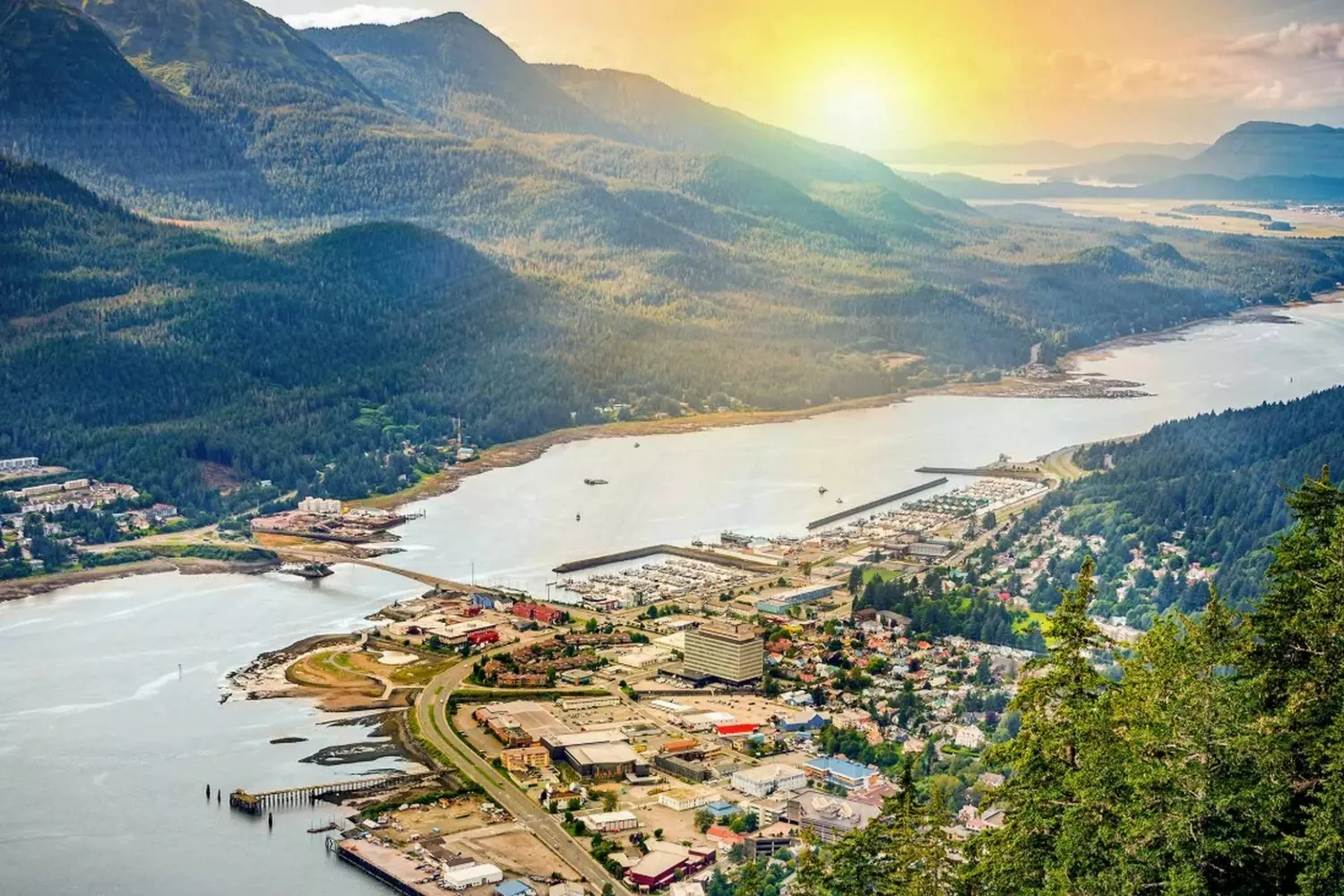
Symbols of Alaska: From the Stars on the Flag to the Salmon on the Coat of Arms
Каждый регион имеет свои знаки узнавания, но у Аляски — особые символы. Они не просто украшают документы и сувениры. В каждом из них — дух сурового Севера, отпечаток истории, природы и силы характера. Это символы, которыми живёт весь штат, от самых южных бухт до полярных льдов.
- 01. Alaska Flag: The Sky, the Bear, and the North Star
Let’s start with the main one. The Alaska state flag is one of the most poetic and symbolic among all U.S. states. On a blue field are eight golden stars. Seven form the Big Dipper constellation, and the eighth is the North Star.
Surprisingly, the flag was designed in 1927... by a 13-year-old orphan named Benny Benson. His sketch won a territory-wide contest and became Alaska’s official symbol — long before statehood.
“The blue is for the sky and mountains. The stars represent strength, hope, and freedom,” explained the young designer. Today, Alaskans cherish their flag — it's simple but full of meaning. - 02. The Seal: Nature, Labor, and Hope for the Future
The Great Seal of the State of Alaska is a visual encyclopedia of the region. It features all that defines Alaska:
- The rising sun over mountains — symbolizing new life and the northern light;
- Forests, ships, trains, a farmer, and a mine — representing work, resources, and frontier spirit;
- Fish and animals — highlighting natural wealth and the fishing industry;
- Glaciers and agriculture — a rare but real combination in this land.
- This seal isn’t just an emblem — it tells a story about living with nature, working with it, not against it.
- 03. Official Animals and Plants: Icons of the North
Alaska has officially recognized several natural “mascots.” Each of them reigns over its ecosystem:
- Official land animal — moose
This forest giant represents Northern resilience. Weighing up to 700 kg, it strides through swamps with ease. Moose often appear even in suburbs — in Anchorage, you might spot one at a bus stop. - Official marine mammal — bowhead whale
Chosen for its majesty and importance to Alaska Natives. These whales can live up to 200 years — some of the longest-living mammals on Earth. - Official fish — king salmon
The region’s culinary icon and major export, around which tourism and tradition are built. - Official tree — Sitka spruce
Thrives in wet, cold conditions. It’s used in construction and in making instruments like violins and pianos. - Official flower — forget-me-not
Small but resilient, it blooms during Alaska’s short, vivid summer — a symbol of memory and light amid long winters.
- 04. State Song: “Alaska’s Flag”
Alaska has its own official song — “Alaska’s Flag”. Written by Marie Drake and inspired by young Benny’s flag, the lyrics go: “Eight stars of gold on a field of blue, Alaska’s flag may it mean to you...” It’s often heard at ceremonies, schools, and museum tours. The anthem emphasizes how deeply symbols matter here — they are a part of culture. - 05. Totem Poles: Living Symbols of Native Culture
In Southeast Alaska — especially in Ketchikan, Juneau, and Sitka — you’ll find tall carved wooden poles: totems. More than decoration, they’re the storytelling medium of the Tlingit, Haida, and Tsimshian peoples. Each totem tells a tale:
- Of family lineage, clan, myth, or an important event;
- They may honor a spirit animal — bear, raven, eagle;
- Or represent a trait like bravery, wisdom, or strength.
Today, Alaska has over 1,000 authentic and restored totems. While they attract tourists, for locals, they remain a living tradition, not folklore.
- 06. Other Cultural Symbols
- Small wooden stilt cabin — the “cache”
A symbol of survival. These buildings protect supplies from predators and deep snow. - Huskies and sleds
Symbols of transport and loyalty. Alaska is home to the famed Iditarod race, inspired by the 1925 serum run by sled dogs. - Northern Lights
Unofficial, but universally beloved symbol of Alaska. Found on shirts, paintings, logos, and even honey jars.
Alaska isn’t just a cliché of cold and bears. It’s a place where every symbol feels like an imprint of eternity — not created for show, but lived through. Each carries a story, letting you feel Alaska not just as a visitor, but with your heart.
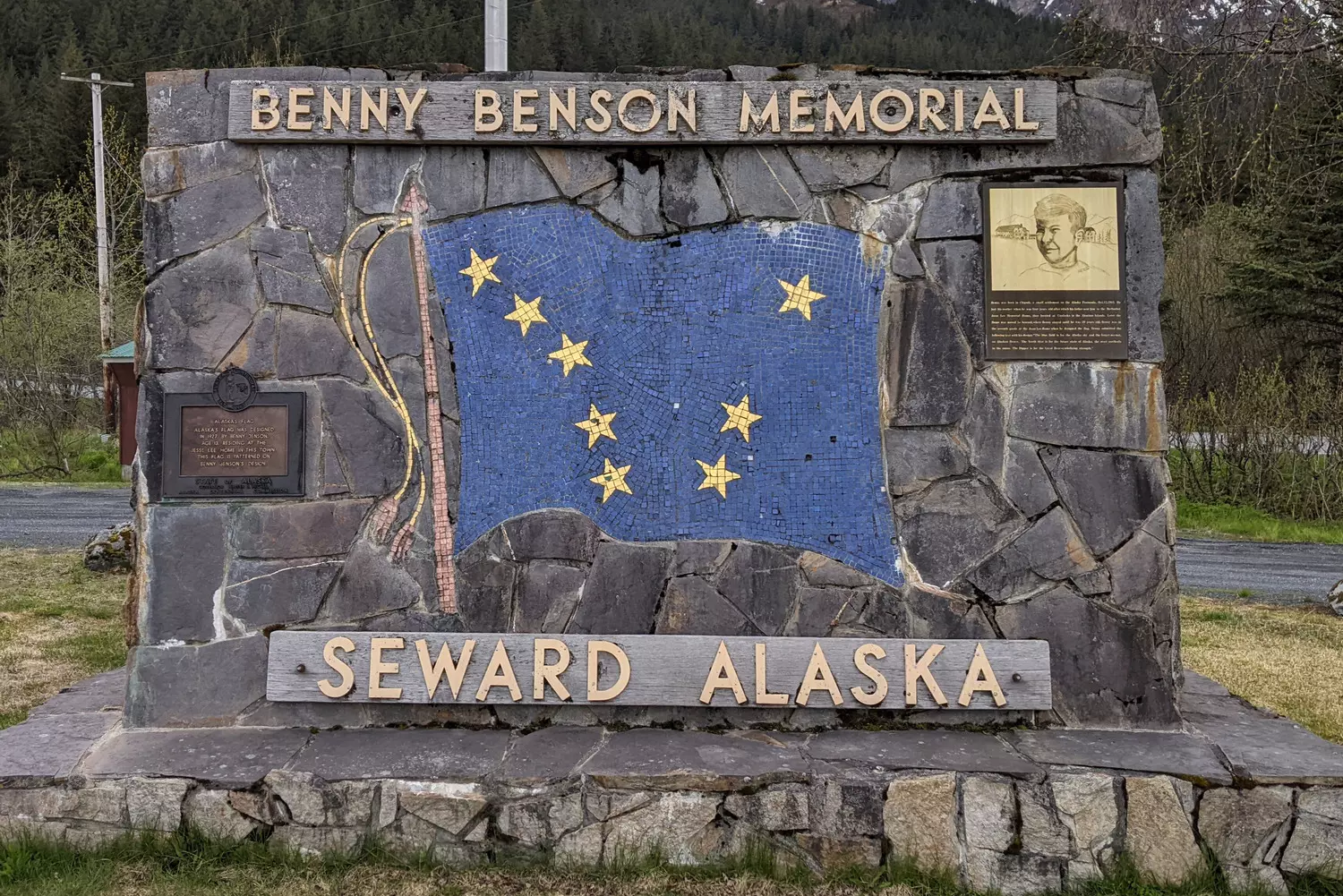
People of Alaska: Guardians of the North and Everyday Heroes
Alaska is not only endless ice and towering mountains, but also unique people living at the edge of the world. Here, ancient cultures of Indigenous peoples intertwine with modern life, full of challenges and surprising solutions. To truly understand Alaska, one must meet its residents — those who not only survive but truly live in this harsh and beautiful land.
- 01. Indigenous peoples: connection to land and time
More than 200 tribes live in Alaska, each with its own history, language, and traditions. The most well-known among them are the Inuit, Aleuts, Tlingit, Yupik, Athabascans, and others.
These peoples are the true guardians of the North, whose knowledge and way of life are passed down not through books, but through legends, songs, and crafts. They live in harmony with nature, honoring every tree, every bird and animal as part of a single whole.
- Inuit, or Eskimos, traditionally hunted marine animals and fished, and their igloos have become symbols of survival in extreme conditions.
- Aleuts — island dwellers, masters of navigation and sea hunting, build their boats from available materials and know every bay and current.
- Tlingit — renowned for their woodcarving and the creation of majestic totems that tell the stories of tribes and spirits.
- Yupik — a people living in western Alaska, skilled fishermen and hunters who preserve ancient traditions in the most remote villages.
A quote from a Yupik elder, O. Akulak: “In every story our grandfathers told, there is the spirit of the moose, the wind from the Arctic, and respect for the land. You won’t learn that in school.” Indeed, many traditions cannot be understood without experiencing them firsthand, spending a day with these people. Their oral heritage is a whole library of wisdom, teaching care for the world and survival where an ordinary person would quickly give up.
- 02. Modern Alaskans: between challenge and comfort
Life in Alaska is a test of resilience and the ability to adapt. The climate sets its own rules: winters are long and harsh, goods and essentials are expensive, and delivery is complicated. Despite this, locals not only live here — they build communities where support and mutual aid matter.
- Fishermen and hunters — continue traditions by harvesting salmon, crabs, and venison. For many, it's not just a profession but a way of life that feeds both family and neighbors.
- Small aircraft pilots — key people without whom delivery of medicine, mail, and food to remote settlements would be impossible. For Alaskans, an airplane is not a luxury, but a vital necessity.
- Remote work — a new trend: modern technologies have allowed many to live in the wilderness while staying connected to the world. For many, the internet is more important than roads, as it connects them to education, work, and even entertainment.
- Respect for nature — is not just words but a daily practice. Locals know that forests, rivers, and animals are not just resources but part of their soul. Hunting and fishing go hand in hand with a respectful attitude and adherence to traditional norms.
The Alaskan community is marked by a special strength of spirit. Here, people have learned to cherish simple joys: a quiet evening by the fire, stories from elders, and the northern lights overhead. Many residents say that true wealth lies in these moments.
- 03. Between tradition and modernity
Today, Alaska’s Indigenous peoples actively preserve their culture and language while participating in the state’s life on an equal footing with other residents. Schools and museums offer lessons and exhibitions about tribal traditions; festivals with dances and songs can draw thousands of spectators.
At the same time, many Alaskans work in high-tech, education, and tourism, combining ancestral knowledge with modern skills. This balance is a unique experience of living at the crossroads of eras and worlds.
The people of Alaska are true everyday heroes. They teach us that to live at the edge of the world requires not only endurance but also the ability to see beauty in the simplest things, to value nature, and to respect history. Getting to know them is like opening the door to a hidden world where the soul of the Northern land lives.
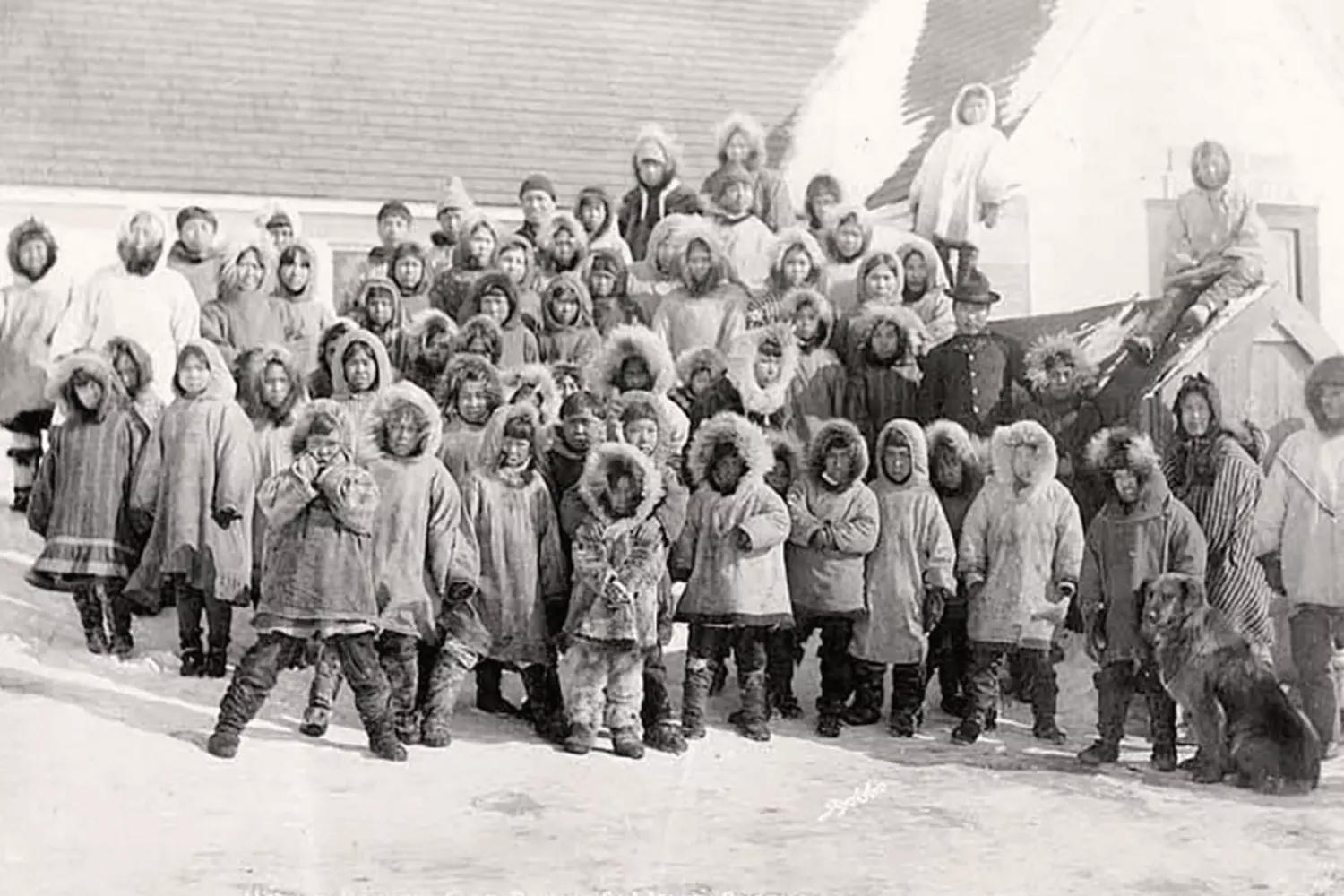
Economy of Alaska: Oil, Tourism, and the Wealth of the Northern Land
Alaska is not just a vast icy expanse and untamed wilderness. It is one of the most resource-rich states in the U.S., where natural wealth and human ingenuity create a unique economic structure. To understand how this land lives and develops, we need to look at its three key pillars — oil, natural resources, and tourism.
- 01. Oil — Alaska's "black gold"
The oil industry remains the main driver of the state’s economy. Despite the growth of other sectors, oil still provides about 85% of Alaska’s budget. This means that many social programs, infrastructure projects, and even government salaries directly depend on the stability of the oil market.
- Prudhoe Bay — the largest oil field in North America, discovered in 1968, was a true economic breakthrough for the region.
- The Trans-Alaska Pipeline, over 1,200 kilometers long and built in 1977, is one of the country's engineering marvels, connecting the oil fields to the port of Valdez.
The oil industry not only provides jobs but also stimulates the development of related sectors — transportation, construction, and energy. However, oil is not the only resource extracted and processed in Alaska.
- 02. Natural resources: more than just oil
Alaska is a generous land that offers much more:
- Fishing — especially salmon. The state is considered the world’s largest producer of wild salmon, and this industry generates billions of dollars for the economy while feeding thousands of families. Fish is not only exported but also shapes the region’s culinary and cultural identity.
- Forestry — vast coniferous forests supply timber for both domestic use and export.
- Coal, silver, zinc, and other metals — important mining resources that help diversify the economy.
- Farming — may seem unexpected for such a harsh climate, but the Matanuska Valley is famous for its crops. Cabbage weighing up to 90 pounds (around 40 kg), as well as potatoes, berries, and other vegetables are grown here — proof that successful agriculture is possible even in northern latitudes.
- 03. Tourism: the heart and soul of the economy
Tourism is not just a pleasant bonus — it's a vital industry that has reached impressive scale in recent years. In 2022–2023, tourists spent approximately $3.9 billion directly in Alaska. Including related services, tourism’s total contribution to the economy reached $5.6 billion.
- About 48,000 people work in the tourism industry — a significant number for a sparsely populated state.
- The average tourist stay in the state is 8.5 nights, indicating that visitors don’t just come for a quick visit — they strive to immerse themselves in the atmosphere and enjoy the nature.
- Roughly one in three tourists returns to Alaska — a strong sign of the region’s appeal and quality of experience.
- 04. Why do people choose Alaska?
- Unique nature: glaciers, fjords, bears, and the northern lights.
- Rich in activities: cruises, fishing, dog sledding, hiking in national parks.
- The chance to dive into a true adventure — where every minute brings new discoveries and emotions.
- 05. The economy of the future: what's ahead for Alaska?
Despite its traditional reliance on oil, Alaska is actively investing in tourism and sustainable sectors. Renewable energy is developing, greater attention is being paid to environmentally friendly fishing, and startups and small businesses are being supported.
The state is promoting education and infrastructure to build a more diverse economy ready for the challenges and opportunities of the 21st century.
Alaska is not just a land of cold and ice. It is a living, dynamic region where economic strength meets respect for nature and culture. Here, people learn to live in harmony with the world around them, drawing from it what’s needed for life and prosperity.
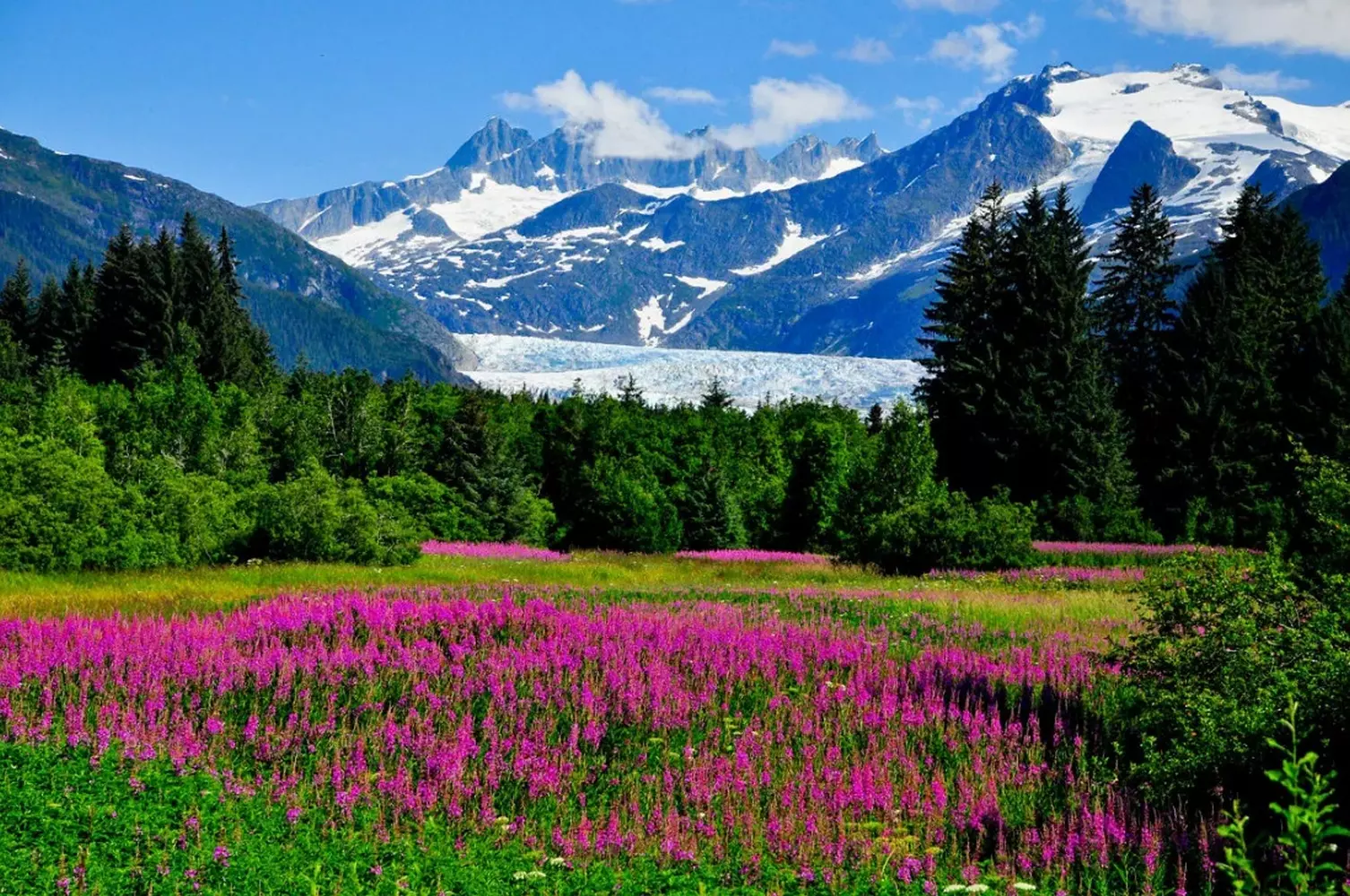
Tourism in Alaska Today: Cruises, Independent Travelers, and the Challenges of High Visitor Volume
Tourism in Alaska is a whole story about how majestic nature and humanity meet on the same shore. In recent years, the flow of tourists has been growing, evolving, and facing challenges that require wise decisions and careful management. Let’s take a closer look at what tourism in the state looks like today, what trends are emerging, and what measures are being taken to preserve this unique northern world.
- 01. The cruise boom and impressive numbers
Alaska is one of the most popular cruise destinations in the world. In 2023, about 1.65 million cruise passengers visited the state, making up around 60% of all summer visitors. This massive influx energizes cities, ports, and services, generates billions of dollars for the economy, and creates tens of thousands of jobs. - 02. Mass tourism and its darker side
With the rising number of visitors come certain problems — particularly in popular port cities like the state capital, Juneau.
- In the summer of 2024, about 1.73 million cruise tourists visited Juneau — a 33% increase from 2019.
- Residents are increasingly complaining about narrow streets that cannot handle the growing crowds.
- Noise from helicopter tours to glaciers and remote areas has become a major concern.
- Trash and improper waste disposal attract wild animals — including bears — to urban areas, posing threats to both people and wildlife.
All these factors have pushed authorities to search for a balance between tourism development and preserving residents' quality of life and the environment.
- 03. New regulations to protect Alaska
In 2024, authorities introduced key restrictions on the number of cruise ships allowed to dock in Juneau — no more than 5 ships per day. This is a significant step toward easing the burden on city infrastructure and the environment.
But this is just the beginning. Starting in 2026, a stricter daily passenger limit is planned — a maximum of 16,000 people per day (and no more than 12,000 on Saturdays, when the flow peaks). These measures are designed to:
- Make tourist stays more comfortable and safe;
- Preserve ecological balance and prevent overcrowding and waste issues;
- Respect the interests of local residents who wish to live peacefully and safely.
- 04. Trends and the future of Alaskan tourism
- Growth of independent travel: more tourists now prefer to explore Alaska on their own, reshaping the landscape of services — from hostels to car rentals and private guides.
- Eco-tourism: protecting nature and promoting sustainable development is becoming a priority for both businesses and authorities.
- Technology and service: digital solutions help manage visitor flows, inform tourists, and optimize logistics.
Tourism in Alaska is not just about stunning views and unforgettable experiences. It’s also a challenge for society, the economy, and the environment. The ability to combine guest influx with care for nature and resident well-being is the key to ensuring that this unique land continues to inspire future generations — even a hundred years from now.
Travelers planning a visit can already see that Alaska is changing — becoming more mindful and sustainable, while preserving its northern charm.
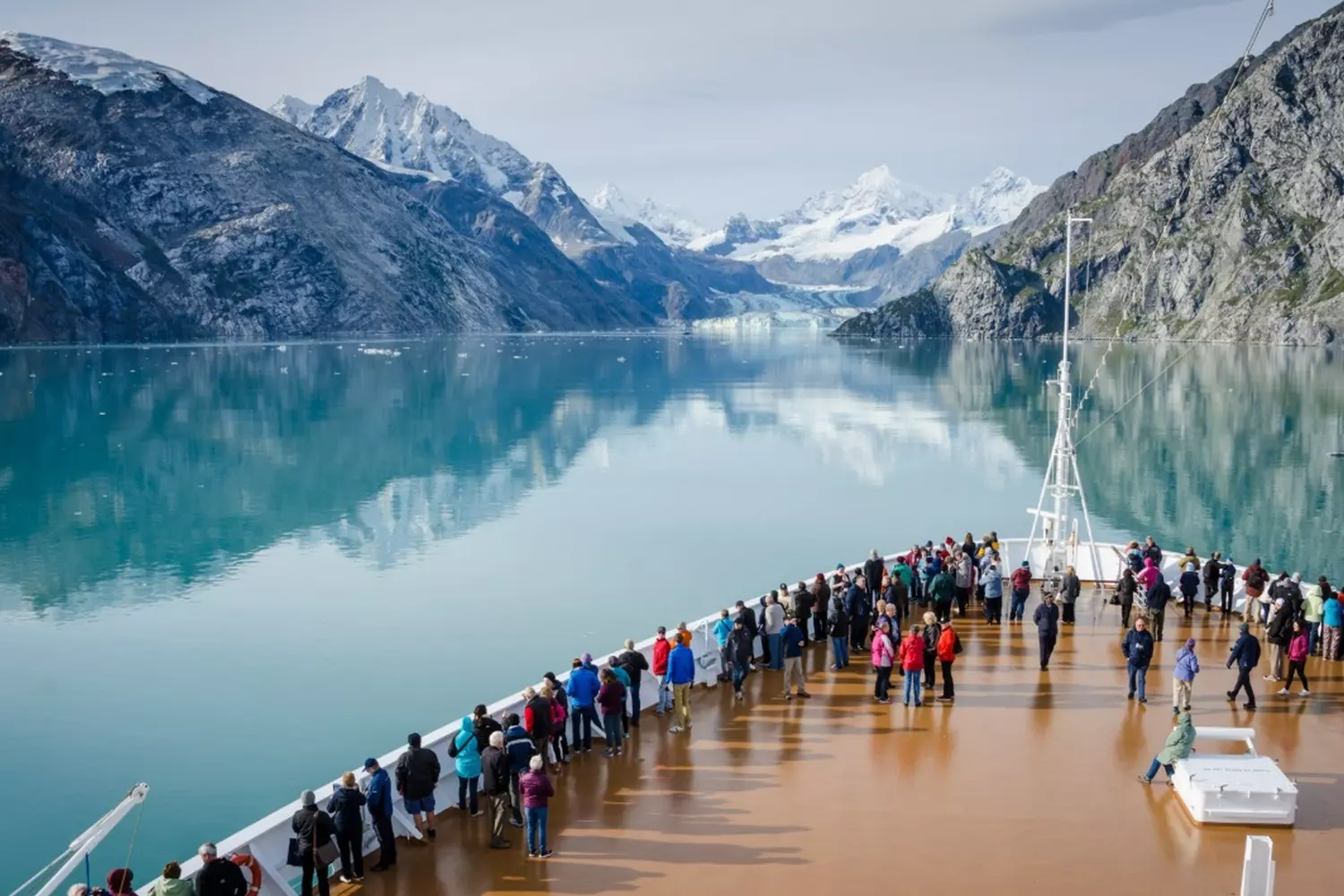
Natural Wonders of Alaska: Where Glaciers, Mountains, and Wild Beauty Meet
Alaska is a true natural sanctuary where every corner amazes with its uniqueness and power. Hidden here are some of the most majestic landscapes in North America: vast glaciers, mighty mountains, deep fjords, and pristine forests. If you think you've seen nature, but haven't been to Alaska — you're in for a true revelation.
- 01. Denali National Park — the heart of the Alaskan Range
At the very center of the state lies a park home to the tallest mountain in North America — Denali (formerly Mount McKinley), standing 6,190 meters high. This is a place where nature reigns supreme: rare animals such as Dall sheep, caribou, and mountain goats roam free, and the scenery is breathtaking. In the park, you can go:
- Trekking and guided jeep safaris to spot bears and moose;
- Hiking routes through tundra and taiga;
- Winter excursions on snowshoes or skis.
Denali is more than just a mountain and a park — it’s a symbol of endurance and the wild beauty of nature.
- 02. Mendenhall Glacier — an oasis of cold and mystery
Mendenhall is one of the most accessible glaciers on the planet, located just a few kilometers from Juneau. Its massive blue ice formations look magical, and the surrounding waterfalls and forests create a stunning combination of natural forces. Visitors can:
- Walk along specially designed trails;
- Visit the visitor center with educational exhibits;
- Join kayaking trips on glacial lakes.
Fun fact: Mendenhall is slowly retreating but still moves several dozen meters each year — a true living organism.
- 03. Kenai Fjords National Park — the realm of marine landscapes
This park is famous for its deep fjords filled with glacial waters and an abundance of marine life — whales, sea lions, bald eagles, and seals. Popular activities include:
- Marine cruises along the coast;
- Kayak tours among icebergs;
- Hiking routes with glacier overlooks.
Kenai Fjords is where ocean and mountains meet, creating a fairytale-like landscape.
- 04. Lake Talkeetna and the Matanuska Valley — crystal-clear waters and mighty glaciers
Talkeetna is a lake of stunning beauty, surrounded by dense forests and mountains. Its waters are so clear you can see the bottom even at great depths.
Nearby is the Matanuska Valley, known for its fertile land and world-famous giant vegetables grown in extreme conditions — including the legendary cabbage that can weigh up to 90 pounds! - 05. Wrangell–St. Elias National Park — home of bears and walruses
Wrangell–St. Elias is a UNESCO World Heritage Site and home to one of the largest polar bear populations on the planet, as well as walruses and other Arctic wildlife. It’s a destination for true adventurers:
- Hiking through tundra and coastal areas;
- Wildlife migration viewing;
- Exploring ancient glaciers and volcanoes.
- 06. Northern Lights — nature’s light show
You can't talk about Alaskan nature without mentioning the Northern Lights. This spectacular phenomenon paints the night sky in waves of green, purple, and pink. The best time to witness it is from September to April, with the top spots being Fairbanks, Denali National Park, and Barrow.
Alaska's natural landmarks are more than just beautiful photo spots. They are living legends and challenges — a story of human harmony (and struggle) with wild elements. Everyone who visits carries a piece of this raw power and beauty in their heart.
When planning your journey, be sure to make time to explore these natural wonders — they’ll show you the true North in all its depth.
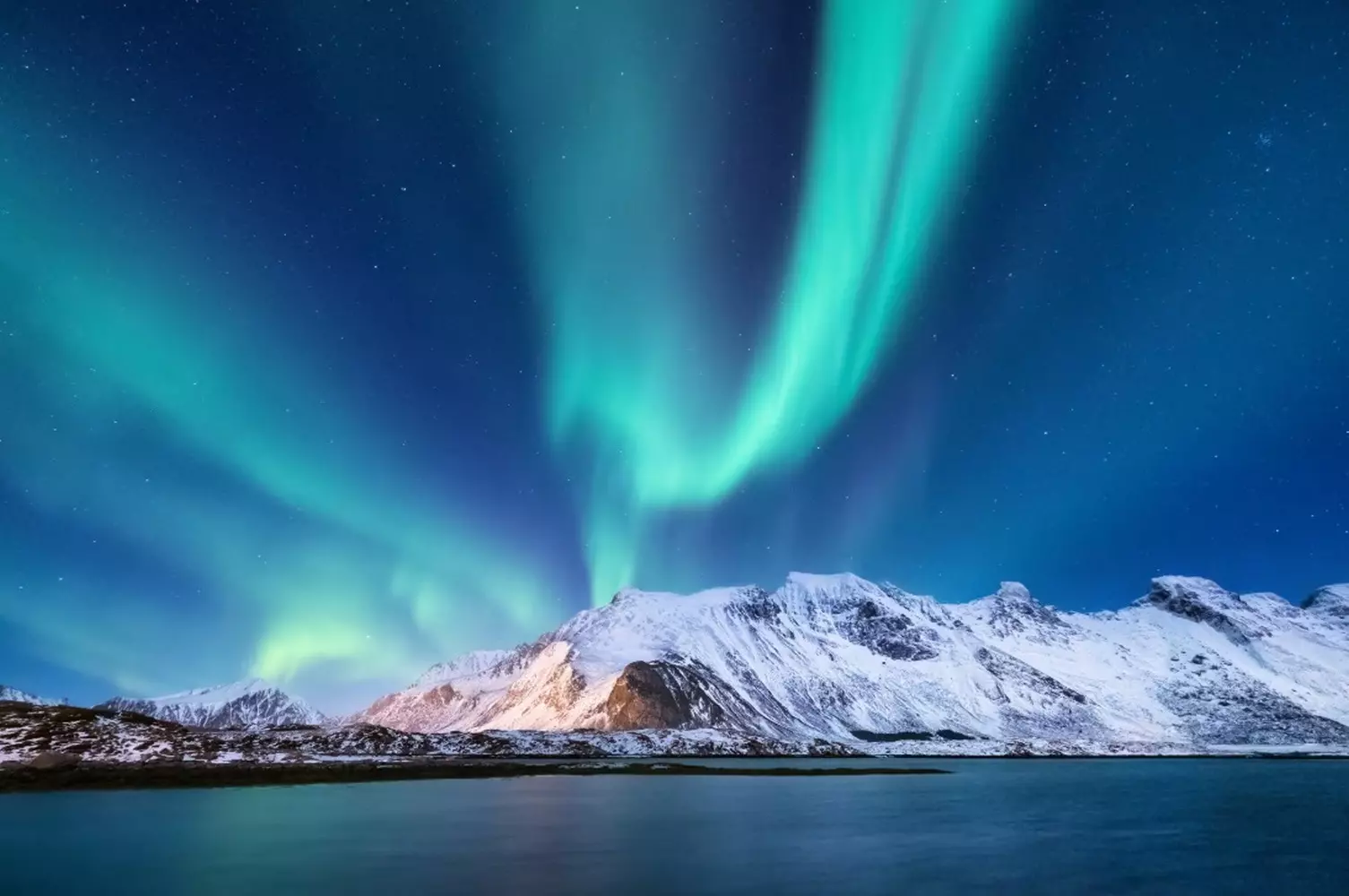
Where the Spirit of the North Lives: Cultural Attractions of Alaska
Alaska is not only about glaciers and moose. It’s also a fascinating cultural space where ancient Indigenous traditions, echoes of Russian colonization, and modern forms of art intertwine into a vibrant tapestry. Exploring Alaska’s cultural map can be just as thrilling as hiking in the mountains or whale watching. Here, you can hear the Yupik language, visit a totem carving workshop, enter a Russian Orthodox church, and attend a northern storytelling festival — all within one state.
- 01. Anchorage Museum — gateway to Alaska’s culture
This is the largest museum in the state and the perfect place to begin your journey through Alaskan art and history. It features:
- Exhibits on archaeology, ethnography, and Indigenous cultures;
- An interactive area for children and adults alike;
- Contemporary exhibitions by artists from the North;
- A unique collection of artifacts from the Russian America era.
This museum isn’t just a repository — it’s a vibrant cultural hub that helps visitors understand how Alaska evolved, from the Ice Age to the digital age.
- 02. Alaska Native Heritage Center
On the outskirts of Anchorage lies one of the most heartfelt places in Alaska. This isn’t a museum in the traditional sense, but a living cultural complex where you can:
- Meet representatives of the Tlingit, Aleut, Inuit, Yupik, and other Indigenous peoples;
- See authentic traditional dwellings — dugouts, wooden huts, stilt houses;
- Take part in workshops on carving, weaving, and mask-making;
- Listen to legends and songs performed by cultural bearers themselves.
It’s a deep and personal experience, especially for those who seek to learn about Indigenous cultures not from textbooks, but firsthand.
- 03. Russian heritage: Sitka and its Orthodox soul
Until 1867, Alaska was part of the Russian Empire, and remnants of that era are still alive — especially in the town of Sitka. Here you’ll find:
- St. Michael’s Cathedral — the first Orthodox church on American soil;
- The Russian Bishop’s House — a historical museum;
- Annual festivals of Russian culture and icons from the 18th and 19th centuries;
- Russian inscriptions on old gravestones and church bells ringing on Saturdays.
It’s a remarkable place where Orthodoxy lives peacefully alongside totem spirits and Inuit legends.
- 04. Aurora Museum in Fairbanks
The Northern Lights are not only a natural wonder but also a cultural phenomenon. In Fairbanks — one of the best places in the world to witness them — there’s an entire museum dedicated to this marvel. Here you can:
- Watch animations and films about auroras;
- Learn how Indigenous peoples interpreted the aurora in their myths;
- See rare photos and instruments used to study atmospheric phenomena.
- 05. Ketchikan — the totem capital of the world
Ketchikan is considered the global capital of totem poles. It’s home to the world’s largest outdoor collection of totems — at Saxman Totem Park and Totem Bight State Historical Park.
- Each carving is not just decoration, but part of an oral tradition: they tell myths, family histories, and significant events;
- Local artists continue woodcarving traditions and offer workshops for visitors;
- You can even attend the rare and important ceremony of raising a new totem pole.
- 06. Local art: galleries, fairs, and traditional crafts
Alaska’s contemporary artists are more than just painters or sculptors. They are storytellers who use traditional techniques and modern materials to speak of the Arctic, of nature, history, and loss. You'll discover:
- Paintings on moose hide and panels made from reindeer bone;
- Jewelry crafted from birch bark, amber, and narwhal ivory;
- Modern art exploring the theme of endangered cultures.
You’ll find galleries even in small towns, and local art fairs aren’t just souvenir markets — they’re cultural centers where you can talk directly with the artists.
If you think Alaska is only about wilderness, think again. Beneath its icy shell lies a surprisingly warm and profound culture, where every story is like a totem carved in wood, and every word is like a footprint in the snow. This is a land not just of people, but of memory keepers — of art, of language, of spirit.
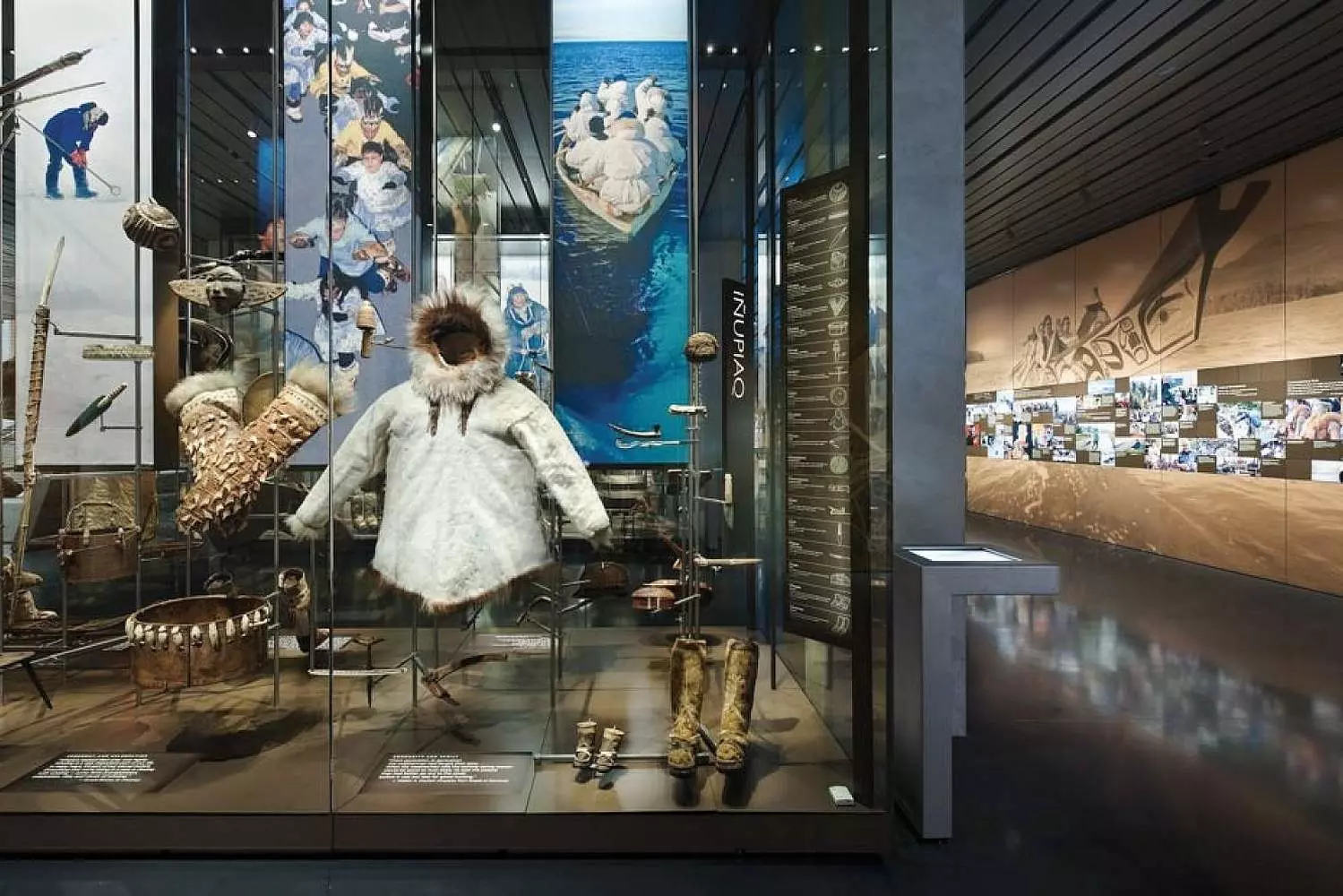
Taste and Rhythms of the North: Festivals, Celebrations, and Cuisine of Alaska
Alaska is not just about bears, glaciers, and the northern lights. It’s also a place that knows how to celebrate. Despite the harsh climate and remoteness, vibrant festivals, delicious gastronomic events, and genuine folk gatherings take place here. Alaska’s cuisine is a story on its own — rich with northern ingredients, hunting traditions, and unexpected discoveries. Let’s look into the soul of this land through music, laughter, and food.
- 01. Alaska’s Festivals: Celebration Even in a Blizzard
Festivals here are not just entertainment — they are a way to survive, maintain community, share joy, and pass down culture.
- Iditarod Trail Sled Dog Race
The most legendary sled dog race and arguably Alaska’s most famous celebration. The race starts in Anchorage and finishes in Nome, spanning over 1,600 km. It’s not only a sport but also a tribute to a true story: in 1925, sled dog teams delivered a vaccine to a remote town, saving it from an epidemic. Held annually in March, parties and festivals take place along the route in various towns. - Fur Rendezvous (or simply "Rondy")
One of the oldest winter festivals in the United States. Held in February in Anchorage, it combines dozens of events: reindeer races, the Fur Queen’s Ball, fairs, parades, concerts, and snowball-throwing competitions. Interesting fact: during the festival, there’s the "Running of the Reindeer" — races on the streets where people run alongside reindeer. Fun, loud, and safe. - Whale Fest in Sitka
Held every spring when humpback whales return to the coast. The festival combines science and fun: lectures from biologists, whale-watching tours, musical evenings, and craft fairs. - Ice Alaska — Ice Sculpture Festival in Fairbanks
A true winter fairy tale with house-sized sculptures, lighting effects, and world champion ice carvers. Held in February–March and attracting participants from around the globe.
- 02. Local Food: What Do They Eat at the Edge of the World?
Alaskan cuisine is a symbiosis of nature’s gifts, Indigenous traditions, and adaptation to the cold climate. Simple, hearty, aromatic, and surprisingly delicious. The main gastronomic stars of Alaska:
- Wild Alaskan salmon — the region’s signature. It’s not only caught here but also smoked, dried, baked, salted, fried, and made into pâtés.
- King crab — huge, juicy meat from the Bering Sea. The most popular dish in tourist restaurants.
- Muktuk — a traditional Inuit dish made from whale skin and blubber, rich in vitamins and omega-3.
- Caribou and moose — often dried, stewed, or cooked over open fire.
- Tundra berries: cloudberries, blueberries, bilberries — the basis for jams, sauces, and pie fillings.
- Salmon sauce or salmon roe — a familiar snack, especially in coastal settlements.
Funny fact: in Anchorage, you can find “moose burgers,” “caribou dumplings,” and “crab pizzas” — local chefs love mixing northern ingredients with familiar dishes.
- 03. Gastronomic Festivals
- Salmonfest in Ninilchik
A music and food festival with the motto: “Save wild salmon and have fun!” You can try everything made from this fish: from tacos and pasta to cupcakes and pizza. Plus live music stages, cooking classes, and fishing contests. - Blueberry Festival in Girdwood
A celebration of blueberries, harvested here by the ton. Pies, honey, ice cream, jams, even blueberry-flavored beer. Fun contests, live music, and costume parades.
- 04. Cultural Food: From Tribal Traditions to Modern Cafés
Indigenous peoples preserve traditional preparations such as:
- Dried meat and fish cured in wind and sun — a winter supply;
- Dishes made from hand-picked roots and seaweed;
- Tea brewed from spruce needles and berries, warming in the cold.
Meanwhile, new trends emerge in the cities: - Cafés with glacier views;
- Farm-to-table restaurants using local vegetables from the Matanuska Valley;
- Food trucks serving crab burritos, salmon ramen, and Thai noodles with local greens.
Alaska surprises not only with its nature but also with a culture celebrated loudly, brightly, and with flavor. Every event is a chance to touch the spirit of the North, taste what you won’t find anywhere else, and feel that even in the silence of the tundra, there’s room for joy and a shared table.
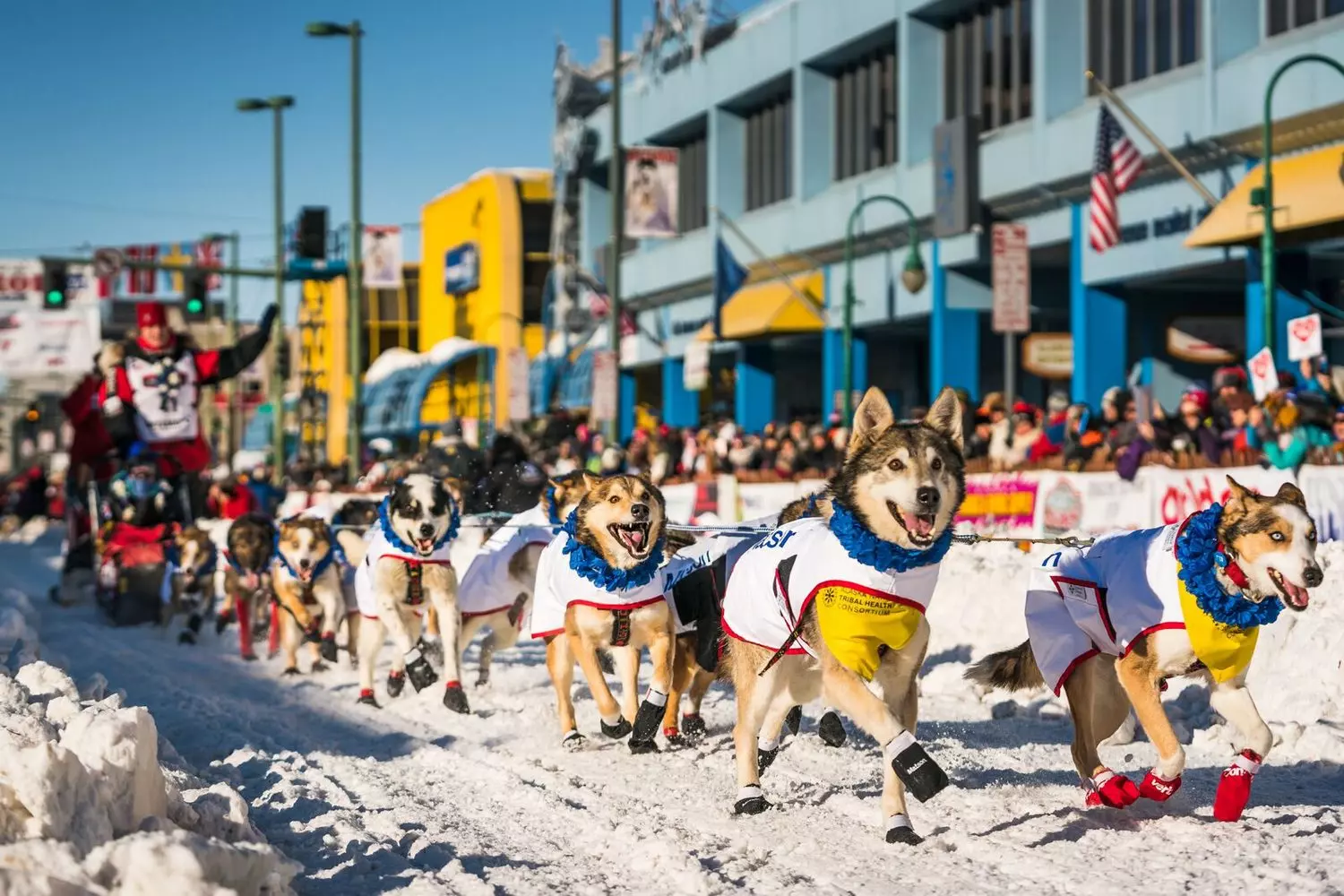
Fragile North: How Alaska Lives on the Edge of Climate and Tourism Changes
Alaska is one of the last places on Earth where nature remains almost untouched. But even here, it cannot withstand global changes. The climate is changing faster than in most regions of the world, and mass tourism is beginning to erode what has withstood glaciers and storms for centuries. While some snap selfies against the backdrop of the aurora, others are trying to save crumbling trails, melting ice, and weary towns. And this is no longer just about the future — it’s about the present.
- 01. Permafrost is no longer permanent
One of the main threats to Alaska is the accelerated thawing of permafrost — the layer of frozen soil that supports half of the state’s infrastructure. When this permafrost begins to thaw, everything starts to collapse: roads, houses, bridges, and entire mountain slopes.
One vivid example is the Pretty Rocks slope in Denali National Park. Once considered stable, this section now shifts at a rate of 15 inches per day, whereas previously it moved only a few inches per year. In 2021, this led to the forced closure of 80 km of the park’s main road. To put it in perspective: that’s half of the main tourist route in one of the most visited parks in the state.
Interesting fact: Scientists predict that by 2050 up to 70% of all permafrost in Alaska may begin to degrade. This will release methane — one of the most potent greenhouse gases. - 02. Coastal erosion: when the ocean advances
Northern coastal villages like Shishmaref and Newtok are already losing land beneath their feet. Shorelines are eroding, and houses are literally falling into the sea. People are forced to leave lands their ancestors have inhabited for hundreds of years. For the first time in US history, federal authorities are considering relocation programs for Indigenous peoples due to climate change.
What is Alaska doing to protect itself?
Despite the challenges, the state and local communities are taking real steps:
- Implementing “green” guides and operators using electric vessels and eco-friendly logistics;
- Educational campaigns for tourists — how to behave in the wilderness;
- Restoring trails and infrastructure funded by tourism taxes;
- Developing a climate adaptation plan, including permafrost monitoring, village relocations, and energy reforms.
Admiring the mountains and the aurora is easy. It’s harder to understand that Alaska lives in conditions where every step a tourist takes can leave a lasting mark. This land is vast and mighty, but it has limits. If we want Alaska to remain just as beautiful for future generations, it’s time to think not only about likes but also about responsibility.
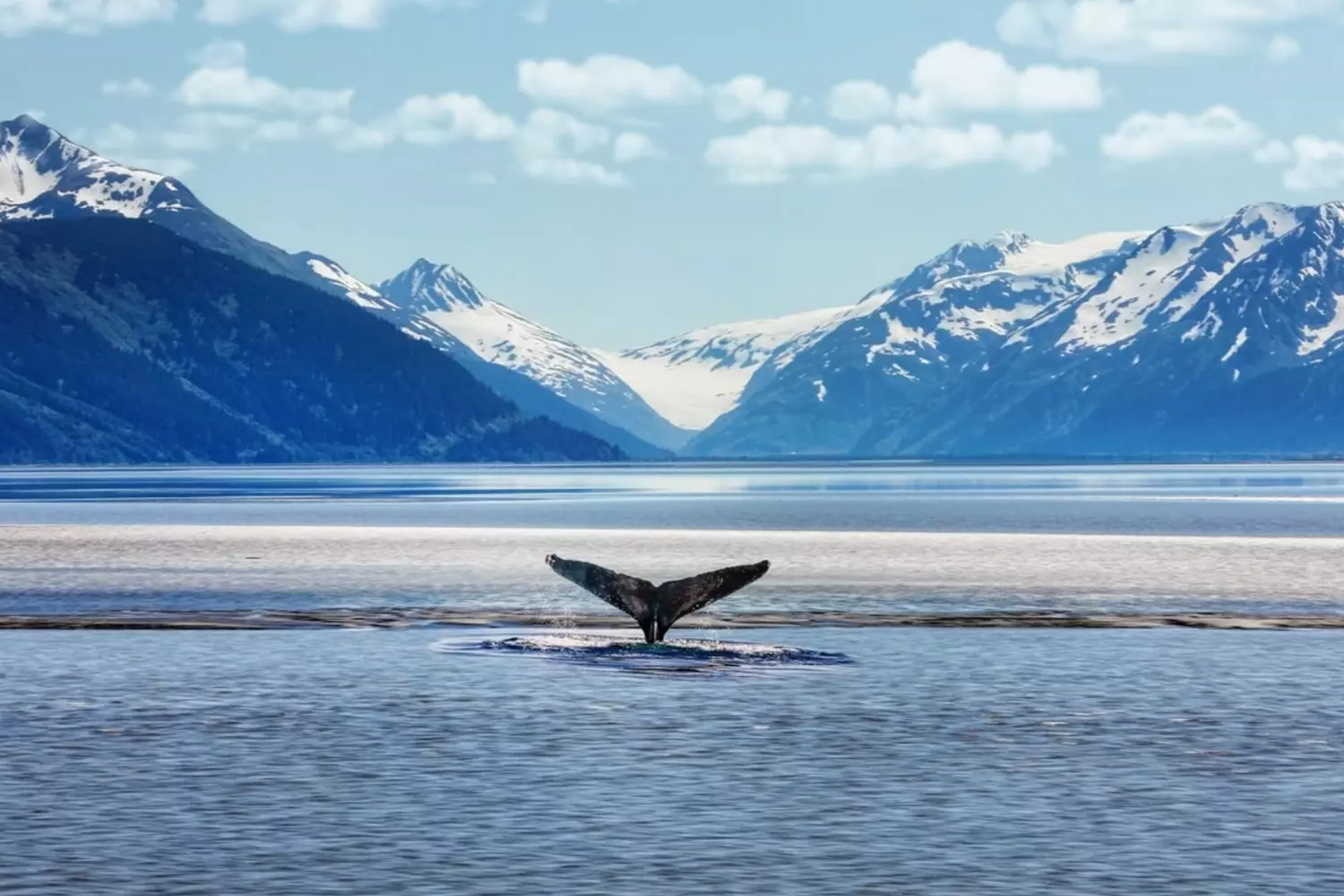
Prepare Your Sled in Summer: Weather, Clothing, and Tips for Those Traveling to Alaska
Traveling to Alaska is like embarking on an expedition into an adventure book: you never know what awaits around the next corner. Today might bring clear skies, and tomorrow — a storm with snow. Nature here doesn’t care about weather forecasts — it does as it pleases. That’s why the main rule for any tourist in Alaska is to be ready for anything. If you’re heading to this harsh and beautiful land, this section will be your survival—and enjoyment—guide.
- 01. Weather in Alaska: fickle but honest
Alaska is vast, and the climate varies greatly across its regions. Imagine this: it might be raining in the south, while 300 km to the north, a snowstorm rages. But there are general patterns that are important to know.
- Summer (June – August)
Temperatures in the southern and central areas range from +10 to +20 °C (up to +25 °C in Fairbanks). Humidity is high, and rain is frequent, especially in coastal zones. In June, there can be up to 22 hours of daylight a day: sunny nights, no darkness at all. Mosquitoes are active, especially near lakes and in the tundra.
Tip: in summer, be sure to bring a mosquito net mask or repellent — insects here are no joke. Some travelers joke that "Alaska’s mosquito is the size of a sparrow."
- 02. Winter (November – March)
- Temperatures in central and northern regions can drop to –40 °C (even lower in Barrow);
- The southern coast is milder: around –5 to –15 °C;
- Polar night: in the north, the sun doesn’t rise above the horizon for several weeks;
- Snow covers the ground from October through April, sometimes until May;
- This is the best time for viewing the northern lights.
Tip: in winter, charge your electronics inside your clothes, close to your body — batteries drain twice as fast in the cold.
- 03. Spring and Autumn (May, September)
- Transition seasons are unpredictable;
- Sharp temperature swings possible — from +10 °C during the day to –5 °C at night;
- Very beautiful landscapes: ice melts in spring, and tundra burns red and gold in autumn.
What to bring: a list without excess, but with wisdom
In Alaska, clothing is not about fashion, but survival. Forget jeans that get soaked and light jackets. Everything must be weather-appropriate, layered, and with spares. Essential gear includes:
- Waterproof windbreaker with a hood — weather can change suddenly;
- Thermal underwear (top and bottom) — especially if traveling in spring, autumn, or winter;
- A warm fleece or down layer — better to have two options;
- Hat, gloves, buff or scarf — it can be windy even in summer;
- Waterproof boots with good soles — useful in rain and on slippery trails;
- Wool or fleece socks — at least three pairs;
- Sunglasses — reflections on snow can be dazzling;
- Insect repellent (summer);
- Binoculars — handy for watching bears or whales;
- Headlamp with spare batteries — indispensable in winter and autumn evenings;
- Thermos and snacks — no cafes in the tundra, and you always need energy;
- Protective case for electronics — phones, cameras, and drones can suffer from moisture and cold.
Helpful tips for those planning a trip
- Check the weather locally
Look up forecasts for specific places — Juneau, Fairbanks, Sitka, Bethel, etc., not just "Alaska." - Don’t rely on stores
Small towns might not have the things you need, and prices can be high. - Internet and GPS don’t always work
Better to download offline maps beforehand (Maps.me, Gaia GPS). - Carry cash
Some villages lack ATMs and don’t accept cards. - Respect nature
Don’t feed wild animals or litter. Here, that’s law, not just advice. - Don’t take risks on trails
Glaciers and mountain routes require preparation — it’s better to go with a local guide.
Alaska is not about easy tourism. It’s a place where you feel the power of nature, its unpredictability, grandeur, and — yes — its capriciousness. But that’s exactly what makes it so special. Prepare well — and Alaska will reward you with incredible views, fresh air, the sound of silence, and the genuine joy of a true discovery.
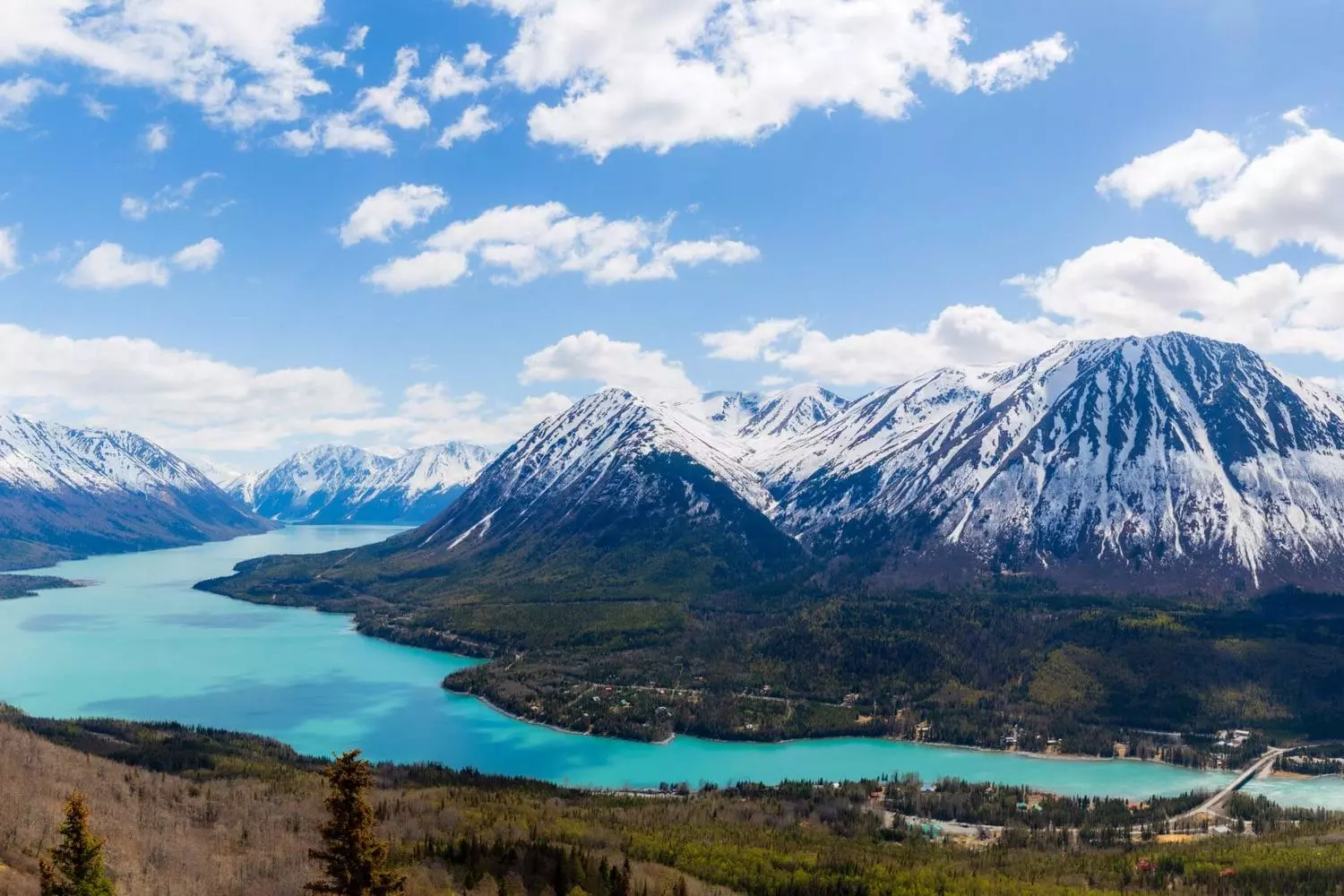
The North in Frame and Word: How Alaska Inspires
Alaska is not just geography. It’s an entire artistic archetype. Just as the Sahara symbolizes emptiness, Alaska symbolizes freedom, solitude, the power of nature, and mystery. For over a century, it has inspired writers, artists, musicians, filmmakers, and photographers alike. In culture, Alaska is always more than just a place: it becomes a hero, a metaphor, an image through which we understand ourselves.
- 01. Alaska in literature: land of loners and seekers
- Jack London: classic of northern epic
Many first “saw” Alaska through his stories — harsh, relentless, unforgiving. The Call of the Wild, White Fang, Love of Life — these works are not mere tales but hymns to endurance, solitude, and the law of nature. London lived in Alaska during the Gold Rush years, and his texts breathe real pain and cold. - Jon Krakauer: Into the Wild
The book (and Sean Penn’s film) tells the story of Christopher McCandless, who left civilization to live alone in the Alaskan wilderness. His tragic story became a legend. The book explores the eternal longing for freedom and the boundary between dream and reality. The bus where McCandless lived (the iconic Magic Bus 142) was removed in 2020 but remains a cult pilgrimage site.
- 02. Alaska on screen: not just a backdrop, but a character
- The Edge (1997) — survival in wild Alaska, with Anthony Hopkins and a bear named Bart playing one of the tensest roles;
- North Country (2005) — drama about female miners in Alaskan backcountry, nominated for an Oscar;
- Insomnia (2002) — Christopher Nolan’s psychological thriller with Al Pacino, where the polar day symbolizes insomnia and loss of control;
- Eight Below — although filmed in Antarctica, inspired by a real Alaskan sled dog rescue story;
- Northern Exposure — cult 1990s TV series about a New York doctor forced to live in an eccentric Alaskan town, mixing humor, philosophy, and cultural contrasts;
- Reality shows like Life Below Zero and Alaska: The Last Frontier show the real daily life of modern Alaskans — no staging, just raw, tough living.
- 03. In visual arts: light, ice, and spirit
Alaska is a perfect subject for painting and photography — not only for landscapes.
- Landscape painters use oil paints to capture endless glaciers, skies, and sun reflections on snow;
- Indigenous artists create incredible carved masks, totems, and jewelry from walrus ivory and wood;
- Contemporary Alaskan artists like Sonya Kelliher-Combs and Nicholas Galanin blend tradition and modernity — their works are exhibited in museums in New York and Paris;
- Photography is a form of reverence: capturing the northern lights, a bear’s silhouette, or ice glimmering on water is an art that borders science and magic.
- 04. Music and stage: between shamanic rhythm and rock
- Traditional tribal songs and dances are living art, passed from elders to children. Every rhythm tells a story.
- The “Celebration” festival in Juneau is the largest cultural event of Alaska’s indigenous peoples, filled with songs, drums, and dance.
- Cities host rock clubs and symphony orchestras alike — Anchorage, Juneau, and Fairbanks give a stage to Inuit beats and classical music.
- Modern Alaskan performers like Pamyua (a Yup’ik and Inuit group) blend ethnic music with jazz, gospel, and R&B.
In all art forms, Alaska is:
- The border between civilization and nature;
- A symbol of strength, solitude, and self-discovery;
- A stage where man confronts not an enemy, but the elements — and himself.
Everyone who writes about, paints, or films Alaska is part explorer, part poet. And in this lies its magic.
Alaska in culture is a northern myth still believed by millions. Its cold pierces to the bone, its vastness — to the soul, and its image — to the goosebumps. Watch the movies, read the books, listen to the rhythms of shamanic drums — and you’ll understand: Alaska lives not only on the map, but in art, symbols, and hearts.
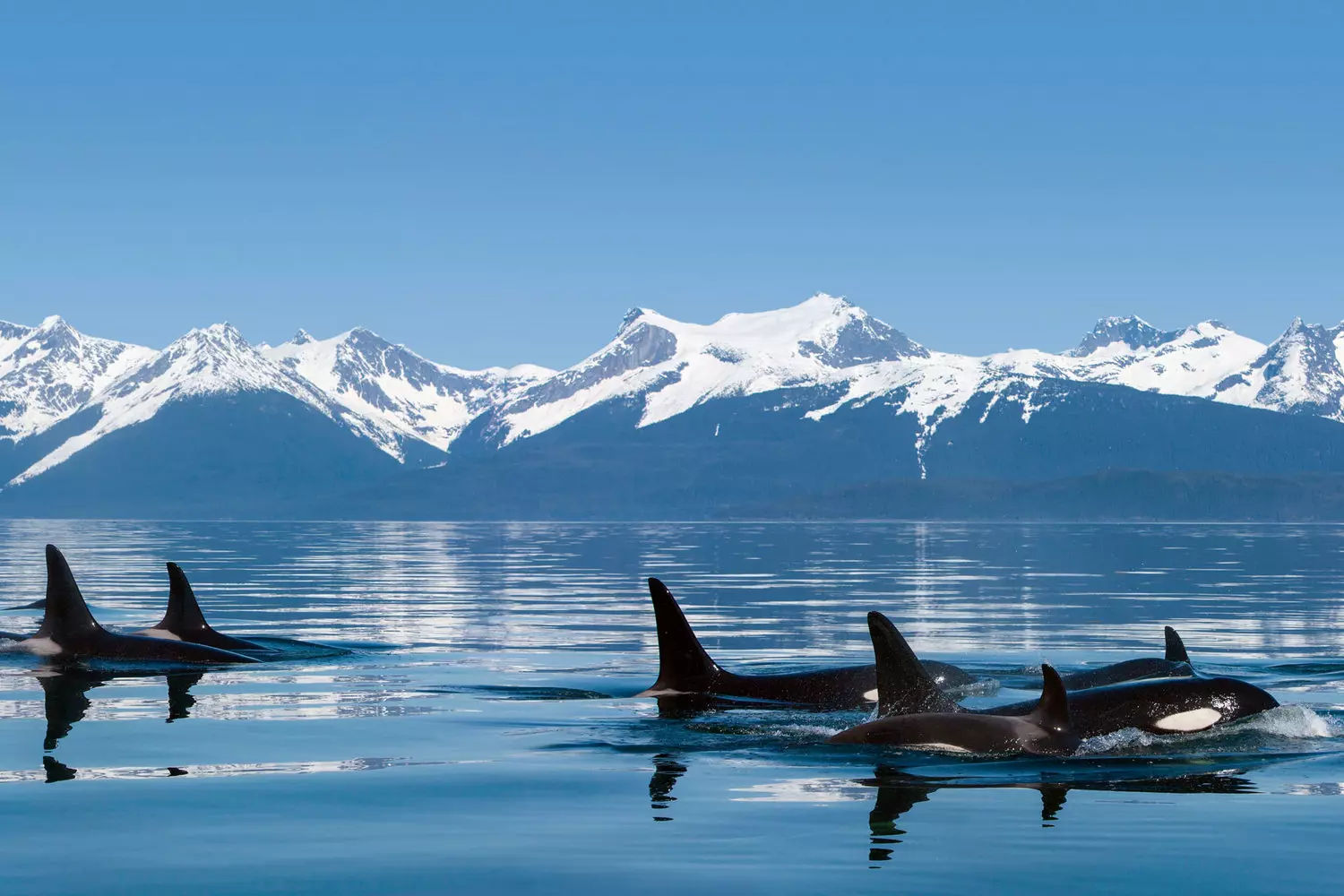
Law of the North: The Strangest Rules and Bans of Alaska
Alaska is a land of harsh nature, bears, glaciers… and very strange laws. Some of them were passed in the 19th century and have remained almost unchanged. Others were born out of the need to protect people from… themselves. And some are so absurd that it’s hard to believe they are really written into the law. But it’s all true: in Alaska, not everything is allowed, even if you arrive here with good intentions, a camera, and a thermos of hot tea.
- 01. Don’t disturb the polar bear... even for a photo
In Alaska, it is forbidden to wake a polar bear to take a photo with it. Yes, this is not a joke. The law states that disturbing wild animals is a criminal offense. And even if you really want to get "that" shot — remember: these are not cute Instagram animals, but predators weighing nearly a ton. Attempting to take a selfie with a polar bear can result in a fine of up to $10,000. - 02. It’s forbidden to get a moose drunk
Alcohol in Alaska is a whole separate topic. But one of the strangest — and unfortunately necessary — laws states: it is forbidden to give alcohol to a moose. Why? Because it really happened. There were cases when people poured beer into feeding troughs or offered moose cider “for fun.” Some animals started behaving aggressively, causing damage to people and property. - 03. You cannot throw a moose out of an airplane
Absurd? Definitely. But once there was an incident when during cargo transport a moose carcass was actually "dropped" — allegedly by mistake — over a village. The residents were shocked, and the authorities responded with a new law.
Now it is forbidden to drop any mammals from aircraft. The law is written seriously but sounds like a joke from “The Simpsons.” - 04. In Whittier, you cannot release salmon from an airplane
A similar story — but with fish. The town of Whittier enacted a ban on dropping salmon from planes into water bodies. It sounds silly until you learn that such “aerial stocking” was carried out in the 1950s and ’60s. Later it was decided that this was harmful to the fish and ecosystem. So it was added to the official list of prohibitions. - 05. In Nome, you cannot watch a moose from an airplane on your wedding day
This exotic law appeared after a mishap during a ceremony: the groom got distracted watching moose during the flight on his wedding day and… was late for his own ceremony. The law is not enforced but remains in local regulations. - 06. You cannot lock your car if a dog is inside
In some cities, including Fairbanks and Juneau, laws prohibit leaving animals in locked cars during freezing cold or heat. In such a harsh climate, this rule can save lives. In case of violation, rescuers are allowed to break into the car without the owner’s permission. - 07. It’s forbidden to carry an axe in public places… without a reason
An axe in Alaska is almost like a handbag in New York. But in some towns, including Wasilla, there is a ban: carrying an axe in public places is allowed only for its intended purpose. And yes, this does not include “survivalist-style” photoshoots outside the nearest café. - 08. A bear is not your business card
In Juneau and Haines, it is forbidden to use wild animals for advertising purposes. There have been cases where people posed with tame bear cubs or walked them around to attract tourists. Now it is prohibited. Even if it is the friendliest bear in the world. - 09. And finally: you cannot live in Alaska without paying taxes — even if you live in a dugout
Some romantics, inspired by "Into the Wild," retreated into the woods, built dugouts, and thought they were exempt from laws. But taxes, hunting licenses, and even sanitary regulations apply even in the wilderness.
Alaska might seem like a vast wild land without rules — but that’s only at first glance. There are many laws here, and some seem absurd. But each one appeared for a specific reason, often very Alaskan.
So if you decide to get a moose drunk with beer, drop fish from a paraglider, or pet a bear for likes — think twice. The North has its own laws, and they protect not only people, but moose, fish, and a healthy dose of common sense.
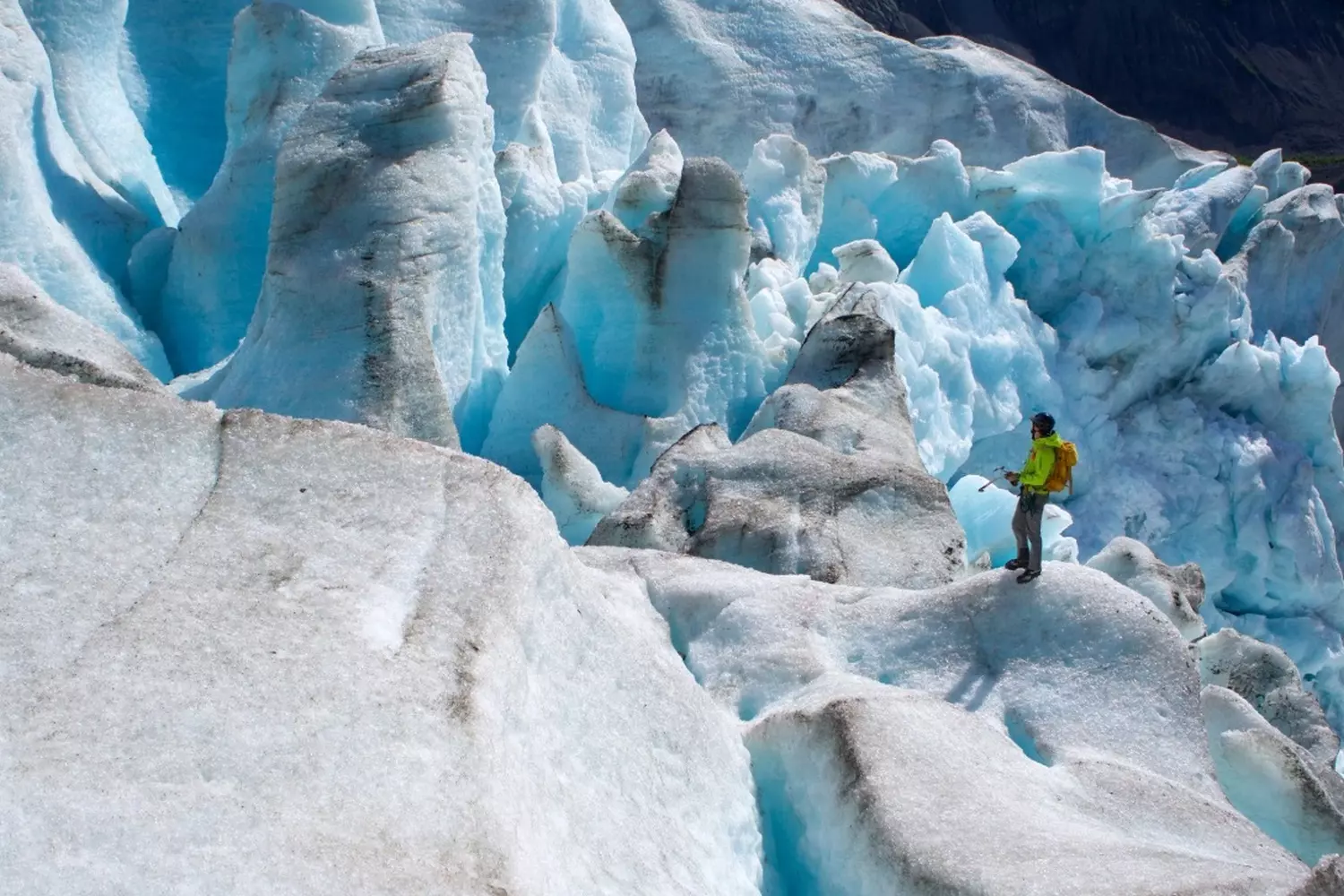
Alaska: 25 Incredible Facts That Are Hard to Believe
Alaska is not just the largest and coldest state in the USA. It’s a land of contrasts, where the Northern Lights dance in the sky, bears roam the streets, and the sun doesn’t set for months. Here lie amazing stories, records, and natural phenomena that many people don’t even suspect. Ready to be amazed?
- 01. You can see four states at once from one mountain
From the summit of Denali (Mount McKinley), the highest point in North America, on a clear day, you can see the territory of Alaska, Washington, California, and even Hawaii (thanks to the curvature of the Earth). - 02. Alaska holds the record for the number of lakes
The state has over 3 million lakes! For comparison, the entire country of Finland, known as the “Land of a Thousand Lakes,” has about 188,000. - 03. Alaska has more pilots than anywhere else in the USA
Due to huge distances and lack of roads, 1 in 58 residents of Alaska is a pilot. It has the highest rate of private aviation in the world! - 04. There is an "ice worm" here — and it’s not a myth
Alaska’s glaciers are home to real ice worms (Mesenchytraeus solifugus). They survive at below-zero temperatures and die if warmed above +5°C. - 05. Alaska could have been part of Israel
In the 1940s, there was a serious plan to resettle Jewish refugees in Alaska to create a “Jewish state.” The project was never realized, but the documents remain. - 06. There is a desert here (yes, a real one!)
In the Kobuk Valley area lies Alaska’s Sahara — sand dunes up to 30 meters high, surrounded by snow and tundra. - 07. Alaska has more coastline than all other US states combined
Thanks to its rugged fjords and islands, Alaska’s total coastline length is about 54,700 km (for comparison, the rest of the USA has 19,900 km). - 08. There is a “Bermuda Triangle” here
In the Devonshire Strait area, planes and ships mysteriously disappear. Locals link this to abnormal magnetic fields and sudden storms. - 09. There are no snakes in Alaska
Due to the harsh climate, neither venomous nor harmless snakes live here — not a single species! - 10. But there are "drunken forests"
Due to thawing permafrost, trees in some parts of Alaska lean at strange angles, creating surreal landscapes. - 11. Alaska is home to the most powerful volcano of the 20th century
In 1912, the Novarupta volcano erupted, ejecting 30 times more lava than the famous Krakatoa. Ash from the eruption reached Europe. - 12. You can find “singing dunes” here
In the Kobuk Valley, sand on dune slopes produces humming and whistling sounds when strong winds blow. - 13. There is a town in Alaska where everyone lives in one building
In Whittier, almost the entire population (about 200 people) lives in one 14-story building — which also houses a school, hospital, and stores. - 14. Alaska has “zombie fungi” that control insects
The cordyceps fungus (like in “The Last of Us”) parasitizes local flies, forcing them to climb higher before dying. - 15. In the 1970s, Alaska almost became independent
The separatist movement was so serious that in 1973 a referendum was held, but 75% voted against independence. - 16. Ancient ice over 30,000 years old has been harvested here
The company "Alaska Glacier Products" sells bottled water from ancient glaciers — called “the purest in the world.” - 17. Alaska is the only state where you can marry… a bear
The law does not forbid “marriages” with animals if both parties “agree.” However, no such cases have been recorded yet. - 18. Alaska is the birthplace of the "ice tsunami"
In 1964, after a powerful earthquake, the town of Valdez experienced a unique event — a 20-meter-high ice wave crashed ashore, destroying everything in its path. - 19. The northernmost tropical forest is in Alaska
In the Tongass National Forest grow giant spruces and cedars, creating a unique ecosystem with a mild climate thanks to warm ocean currents. - 20. Alaska has its own Stonehenge
Stone pillars on Kodiak Island form an ancient astronomical complex created by an unknown civilization more than 2,000 years ago. - 21. Giant mushrooms grow in Alaska
In the tundra, you can find puffball mushrooms up to 1 meter in diameter, which locals call “tundra watermelons.” - 22. Unique “two-story” forest
In some areas, trees grow on the trunks of their dead predecessors, creating amazing “plant staircases.” - 23. A river that flows… uphill
Due to special terrain and tides in Cook Inlet, an optical illusion makes it look like the Seward River flows uphill. - 24. “Talking” glaciers
The Spencer Glacier emits eerie musical sounds when meltwater moves through its crevices. - 25. Alaska has a “Martian” valley
The landscapes of the Valley of Ten Thousand Smokes so resemble Mars that rover tests are conducted there.
Alaska is not just an “ice desert.” It’s a place where nature sets records, history delivers surprises, and people live in harmony with extreme conditions. Want more amazing stories? Head north — and see for yourself!
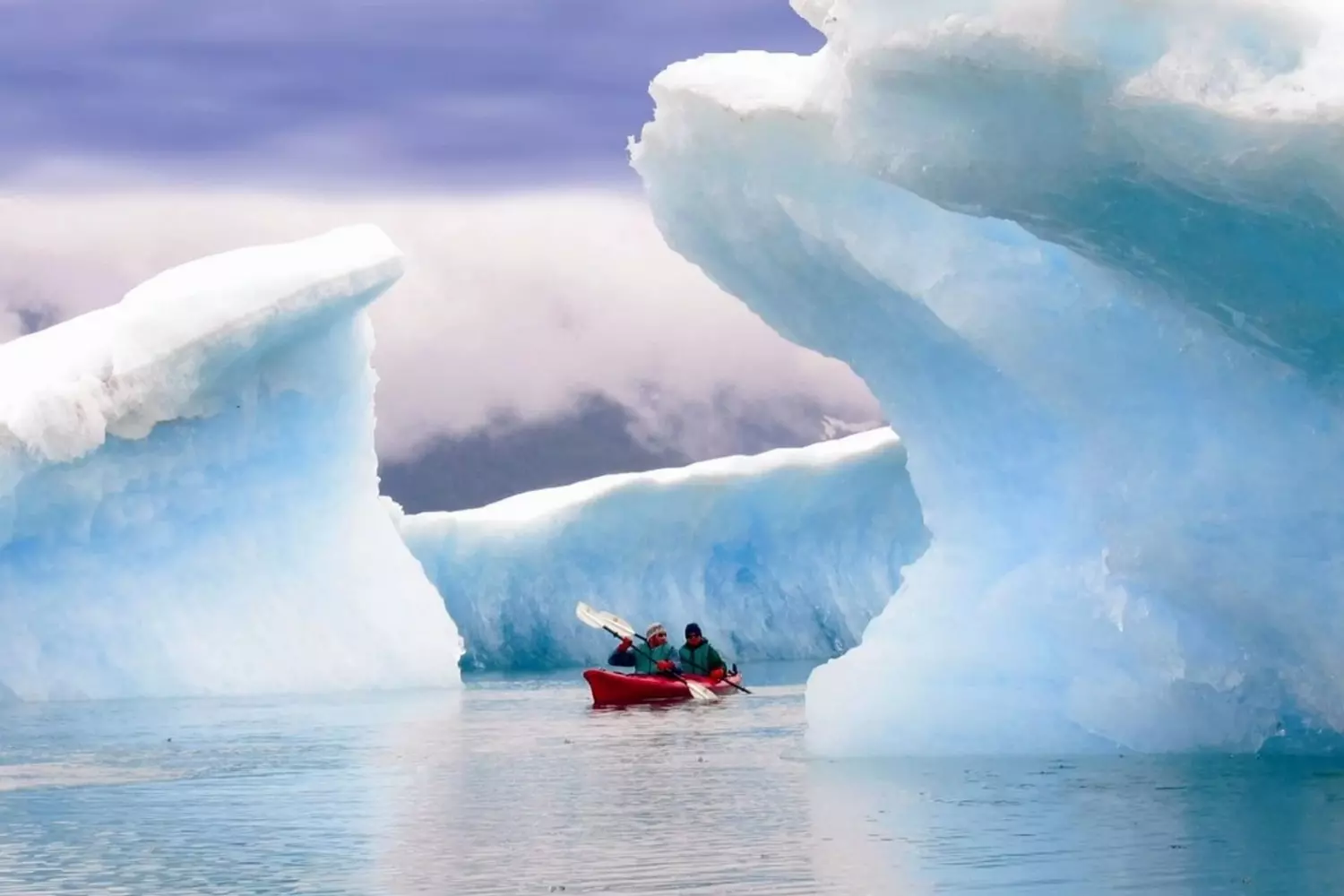
Discover your Alaska with American Butler
Alaska is not just a destination. It’s a challenge. A dream. A feeling that you are truly at the edge of the Earth. Here, the wind speaks an ancient language, bears don’t fear humans, and the sun can stay above the horizon for an entire month.
But to see the real Alaska — not a postcard, not a tourist facade — you need a guide. Someone who knows the roads, the climate, who understands when to stray off the beaten path to capture the shot of a lifetime.
American Butler organizes journeys to Alaska designed just for you:
- With a personalized itinerary;
- With comfortable logistics;
- Considering the weather, your interests, and skill level;
- With a true guide who shares stories, not just shows sights.
Don’t just travel — live Alaska.























